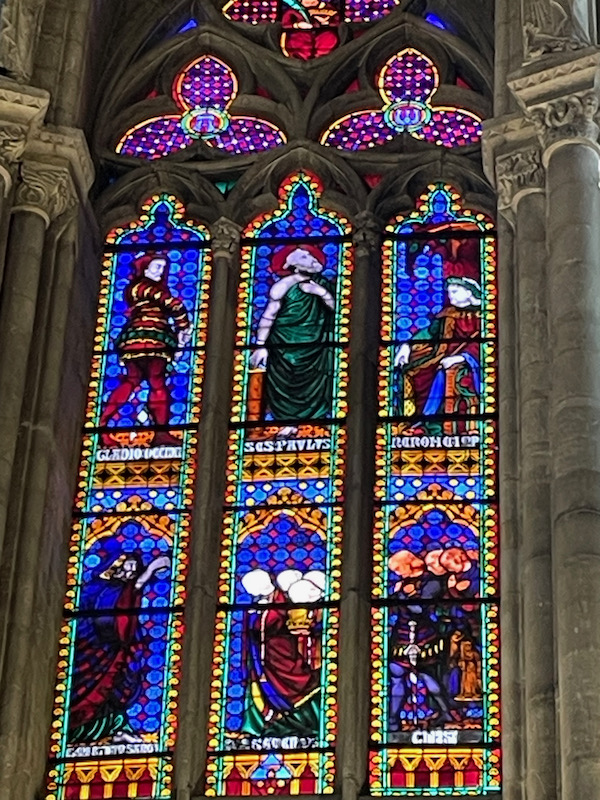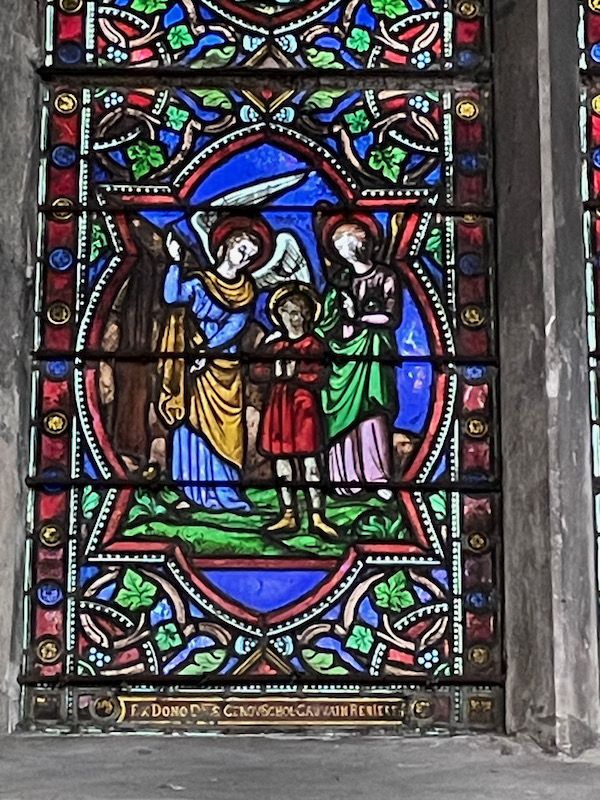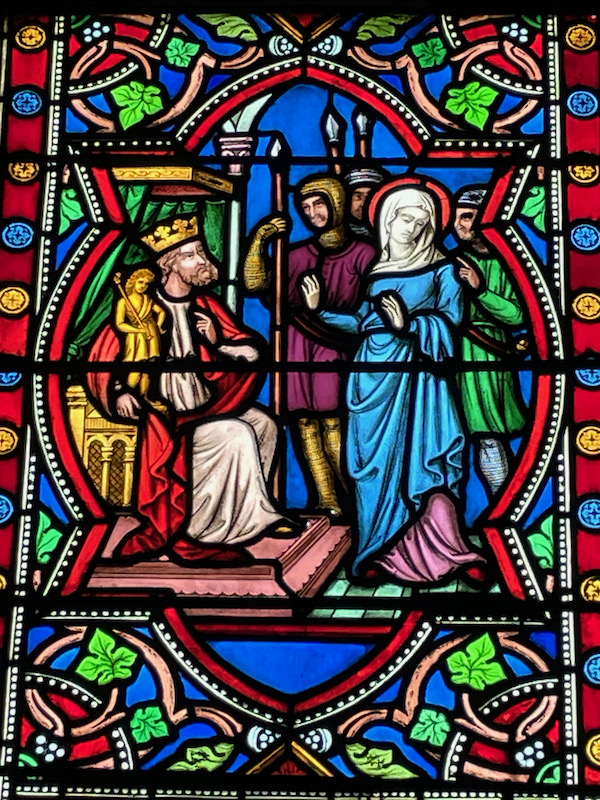Our Blog - Normandy 2023 - Le Mans, France
The only reason I had ever heard of the city of Le Mans was because of the 24-hours of Le Mans, the car race is held here every year. However, it also seems to be somewhat known for the marriage of Geoffroy V of Anjou and Mathilde, daughter of King Henry I of England, which brought about the Plantagenêt Dynasty and the first of the Angevin kings. Between 1154 and 1485, England was ruled by a descendant of this family, starting with Henry II, the son of Geoffroy V and Mathilde.
It is somewhat divided into 2 parts: Old Mans, called Cité Plantagenêt, is the historic district of the city and is up on a plateau, and the rest of the city below. I also has a well-preserved Gallo-Roman wall dating from the 3rd century.
We stayed at a hotel just behind Place de la République and the former Convent of the Visitation. The church from the convent, the Chapelle de la Visitation, is still a church but it wasn't open while we were there. The other buildings of the convent had housed a prison up until 1995. A huge project then started to turn it into a new "heart" in the downtown area. The former buildings were changed to now include bars, restaurants, our hotel (Leprince Hotel Spa), an art gallery, and luxury apartments. This picture shows the Chapel (with the interesting bell tower) across Place de la République.
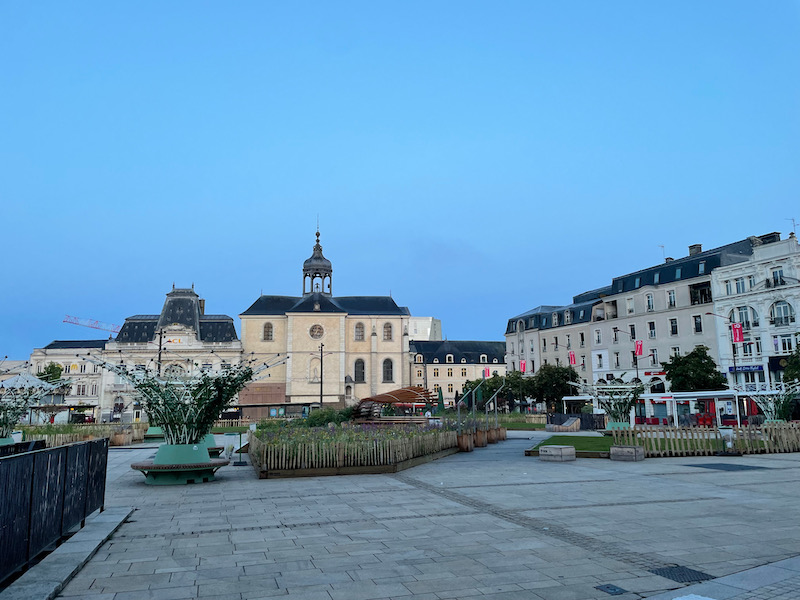
Église Saint-Benoît was built for the first time in the 12th century, then rebuilt in the 15th and 16th centuries on Gallo-Romanesque and Merovingian ruins. It had to be rebuilt in 1903 due to severe damage. It is stuck in the middle of other buildings so getting an overview picture was a bit difficult. With the large bell-tower and entry staircase, you would almost think it is larger than it really is. Inside, you can see the rather short have and side aisles with mostly Romanesque arches. A few of the ribbed arches had very nice painted keystones.
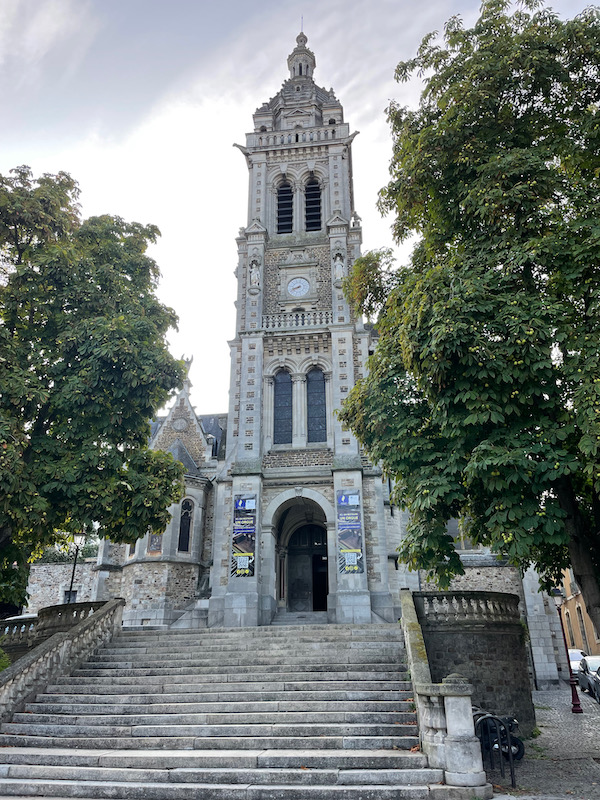
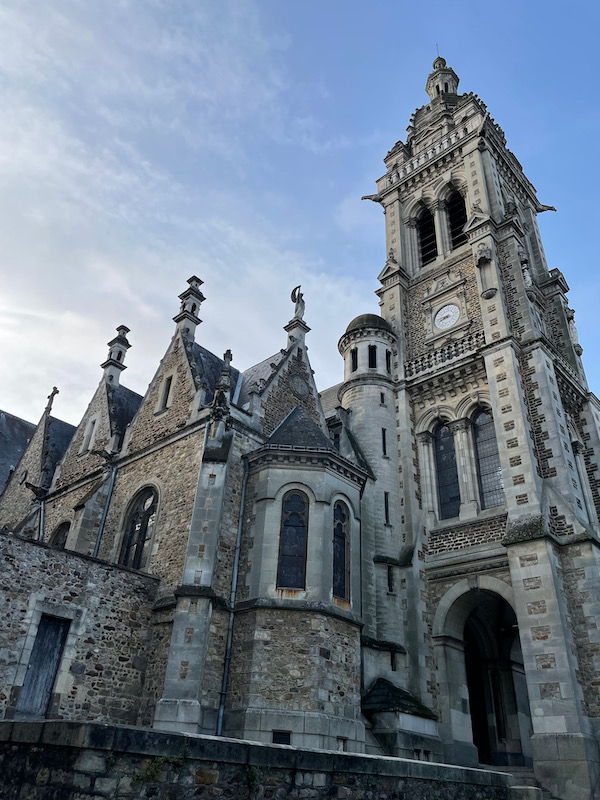
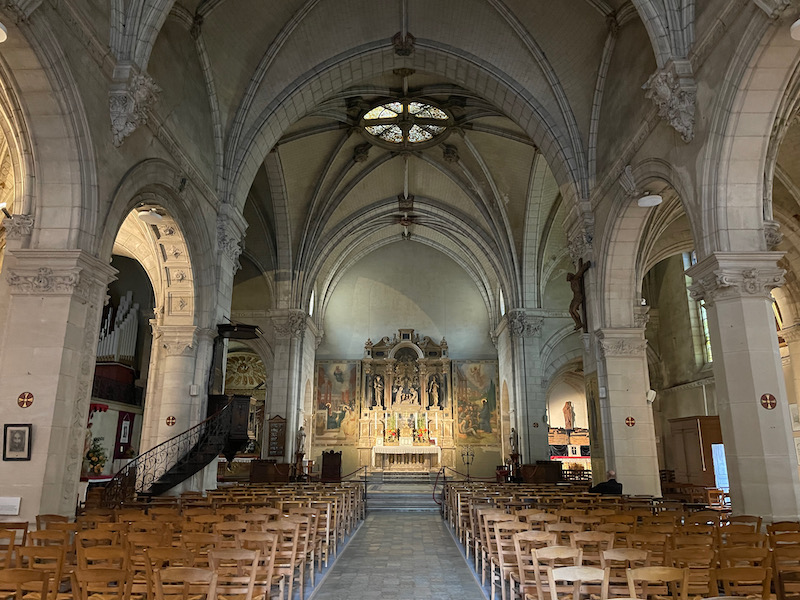
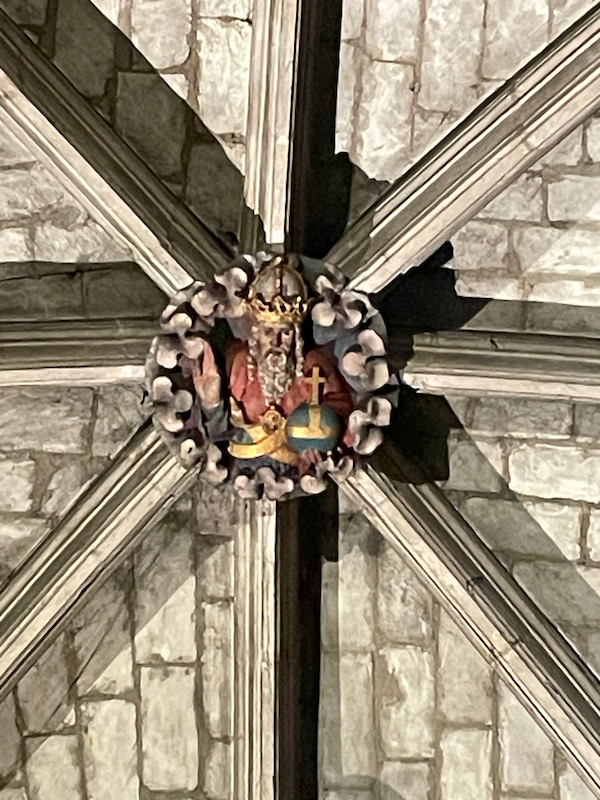
I only took 1 stained-glass window picture here, this one with Saint George killing a dragon (left) and then Saint Sulpice (right).
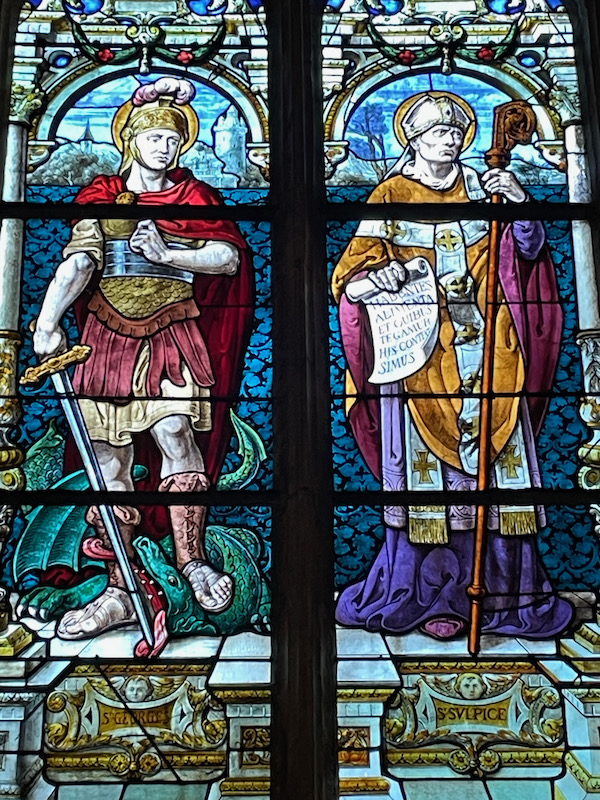
The two chapels on either side of the nave (pictures 1 and 3), and the nave itself (picture 2), date from the 14th and 15th centuries.
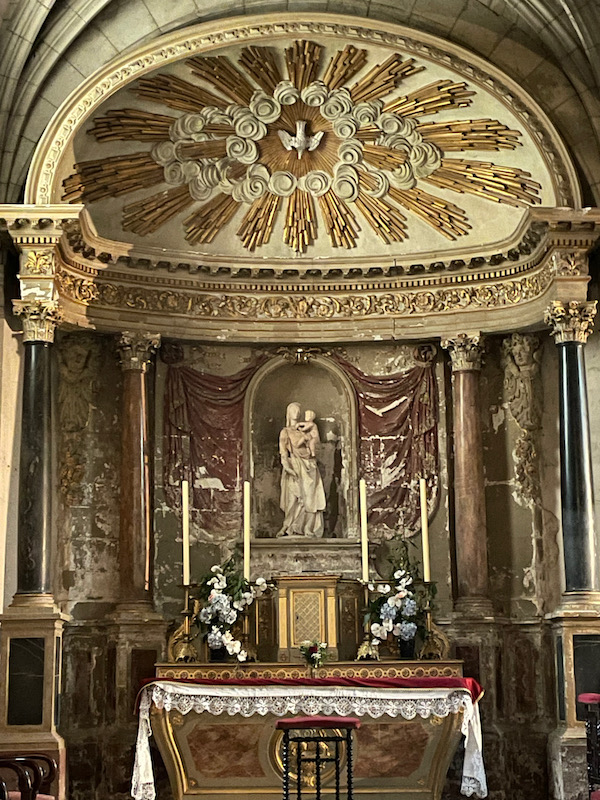

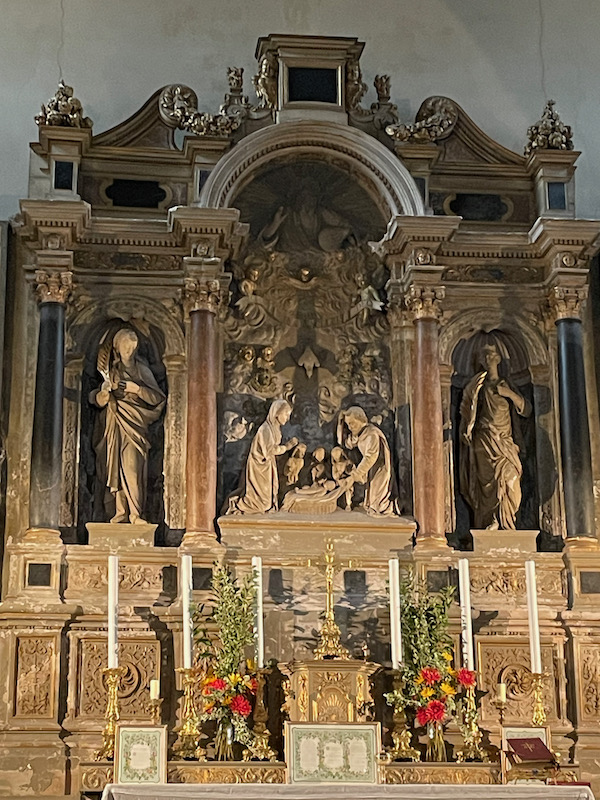
We then did a little walk along gallo-roman wall and the remaining tours. Supposedly, the wall here is the best preserved late Roman defensive walls surviving in France. Of the 40 original towers, 19 of them have been preserved. The walls were built in a typical Roman technique: parallel brick facings with mortar between them with an average height of more than 30 feet and 15 feet thick at the base. What for me was very unique is that the masonry and brickwork are uniquely decorated. Contrasting colors of terracotta bricks, pink mortar, red sandstone, light sandstone, white limestone were arranged to create chevrons, columns, X-shapes, flowers and more.
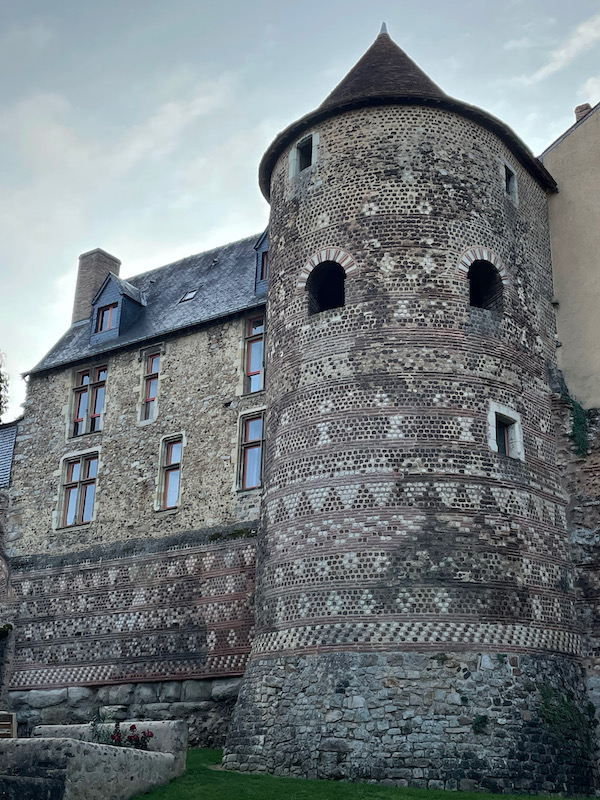
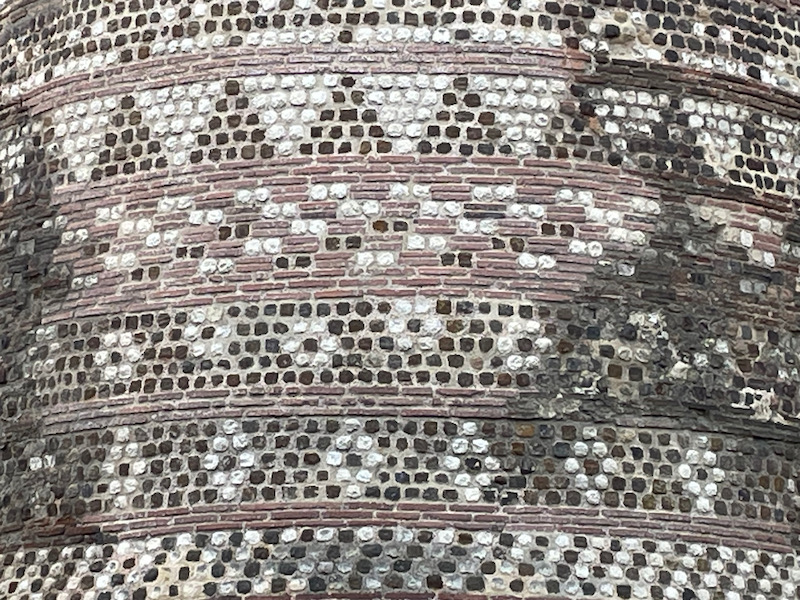
There were 6 large gateways into the Roman town. This one, called the "Grande Poterne" is one of 3 remaining. Originally, there was just a dirt ramp (used for horses and carts) that was converted into the stairs that you now see in the 16th century.
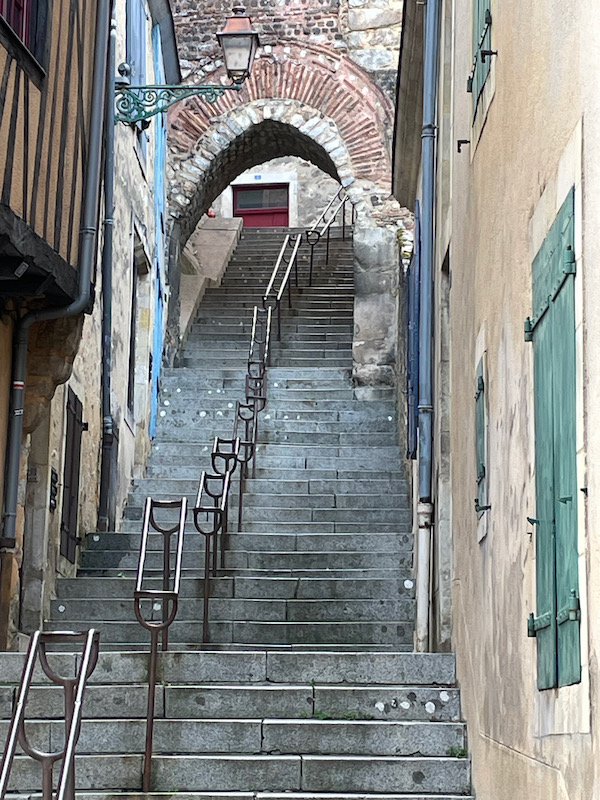
Another stretch of the wall, and you can see the newer-style houses that were built at the top.
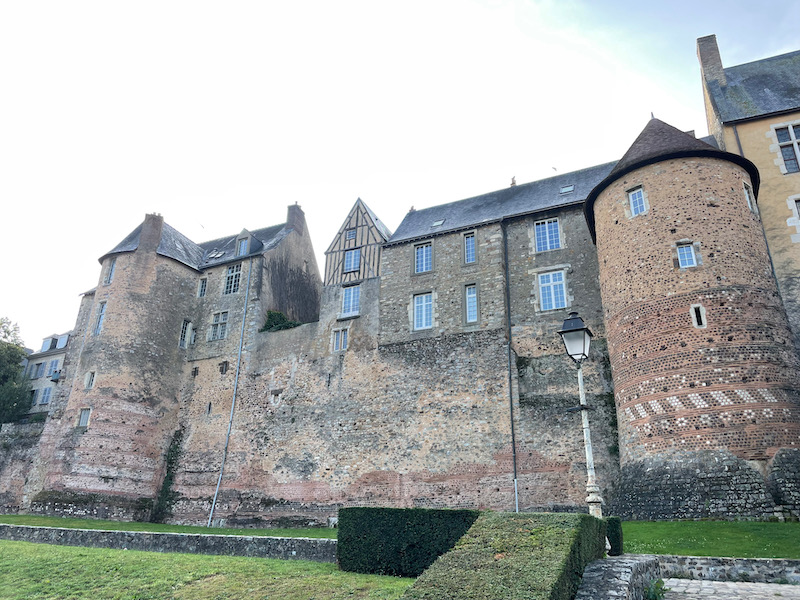
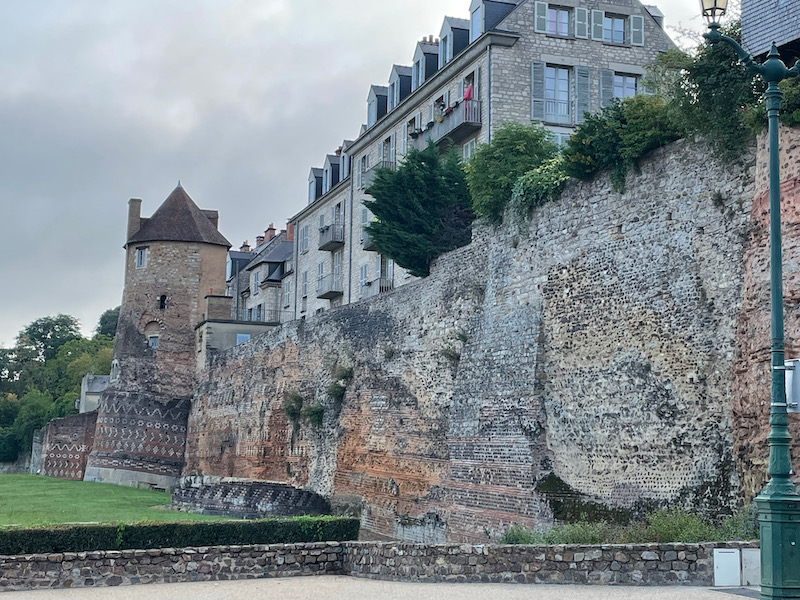
We made our way up, up, and up, to the Old Plantagenêt medieval town up on a plateau. From the top, hopefully you get a decent feeling of how high up we actually were above the base of the city where we were when we walked along the Roman wall.
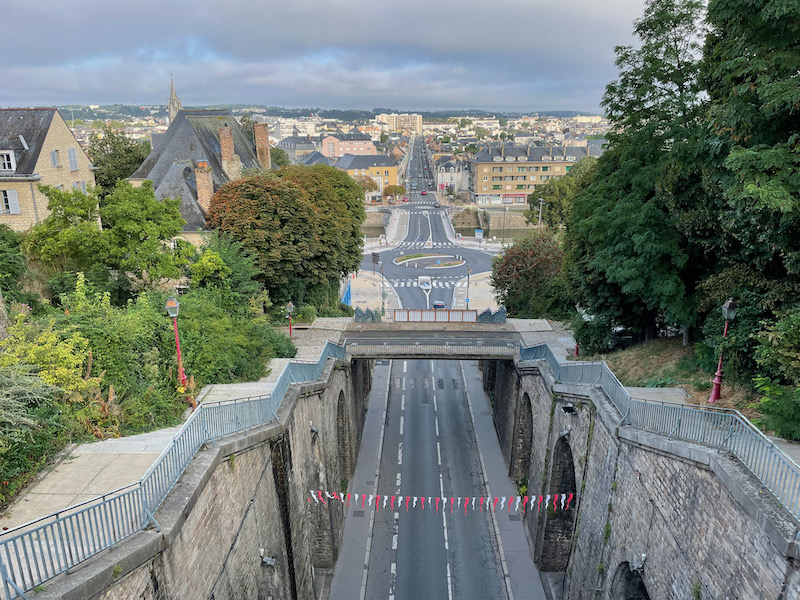
A few ways that you can tell it is an old medieval town are the cobblestone streets and half-timbered houses. But the real defining characteristic is the remains of these large, rectangular stones on either side of the doorways. Depending on who you ask (and maybe both are correct) .. these are either mounting-blocks, which help the rider get on-and-off horses, or they are meant to avoid damage to the doorway from carriages that would turn in.
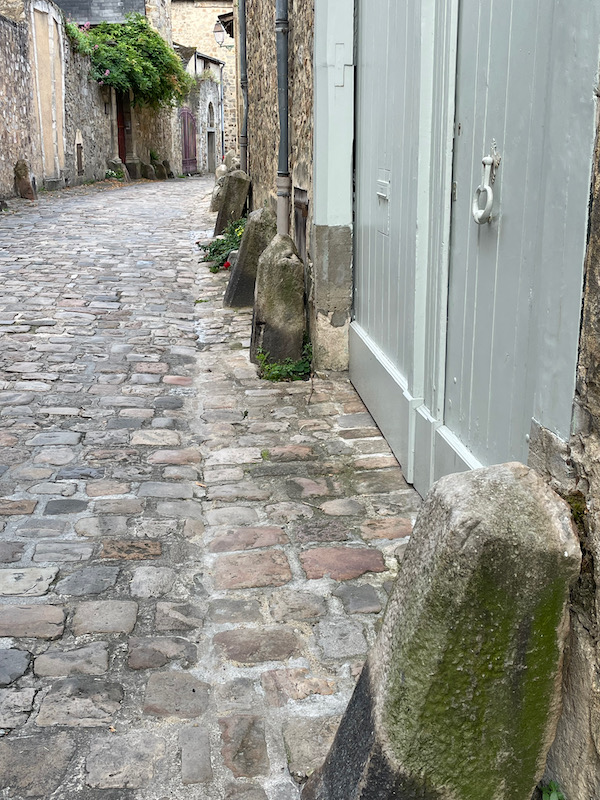
The Palais du Grabatoire is the current episcopal residence of the Bishop of Le Mans. It is an old canonical palace built in the first half of the 16th century. You can see the ornate windows and the turrets, which contain the staircases.
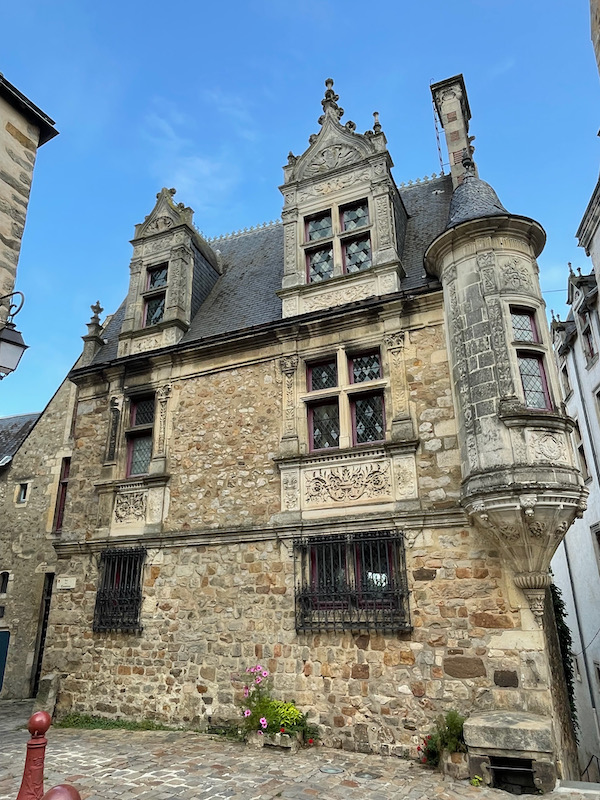
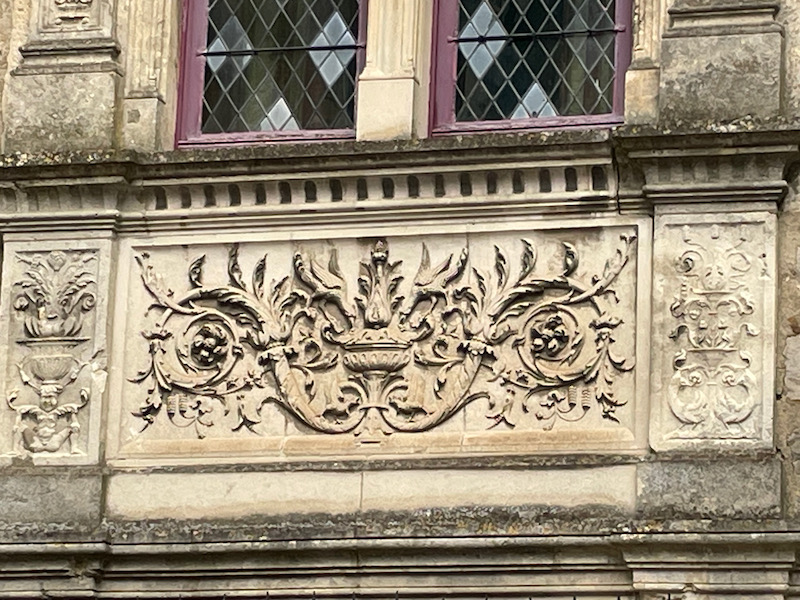
The old town contains quite a few old half-timbered houses including this one, called the House of the Red Column (Maison du Pilier rouge). It is one of the symbols of the old town, dating from the 15th and 16th centuries. It houses the tourist office.
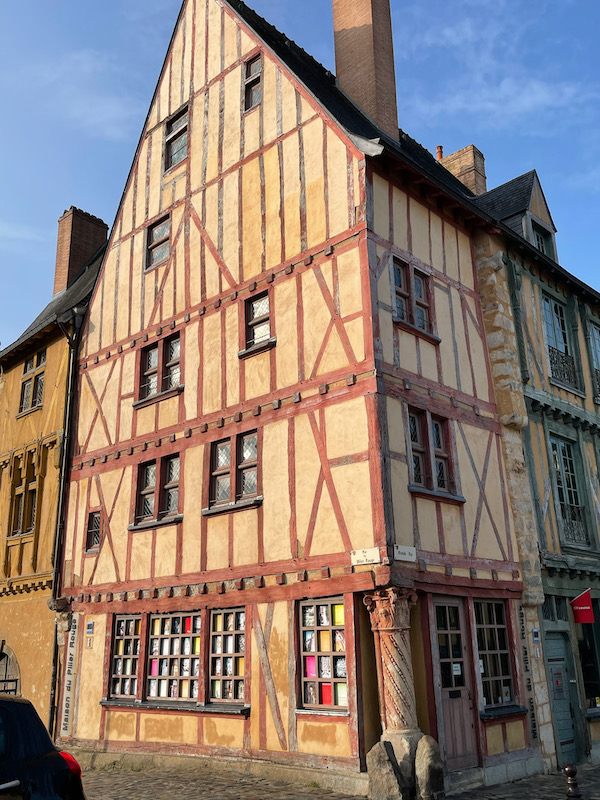
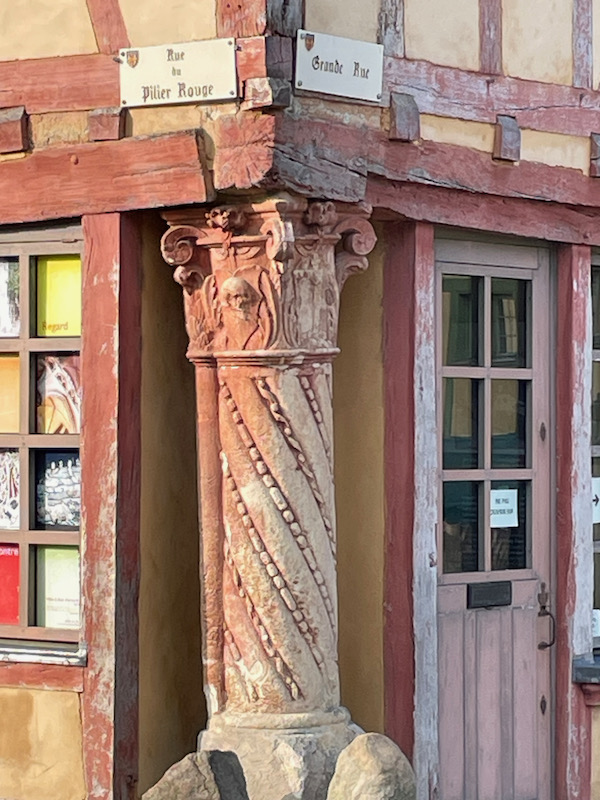
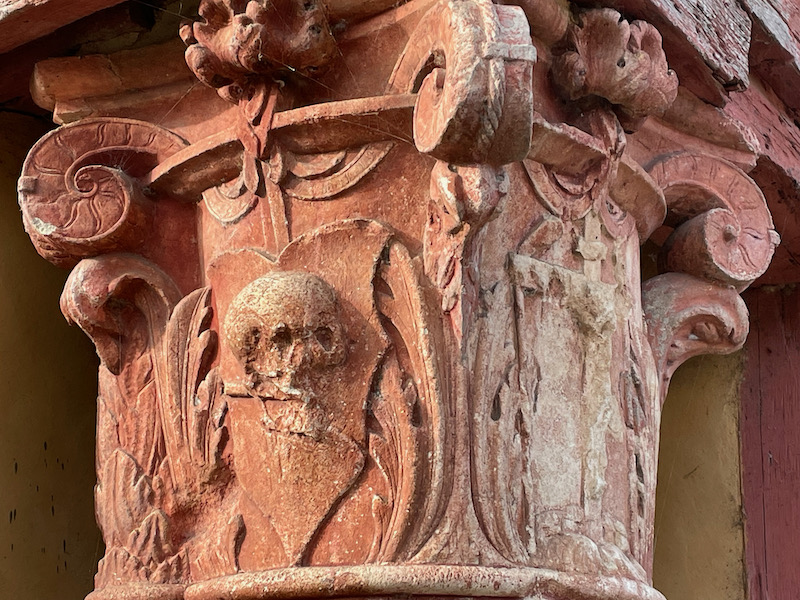
Across the way is the Maison du Pilier verte (green column house), which is another half-timbered house with an interesting corner column.
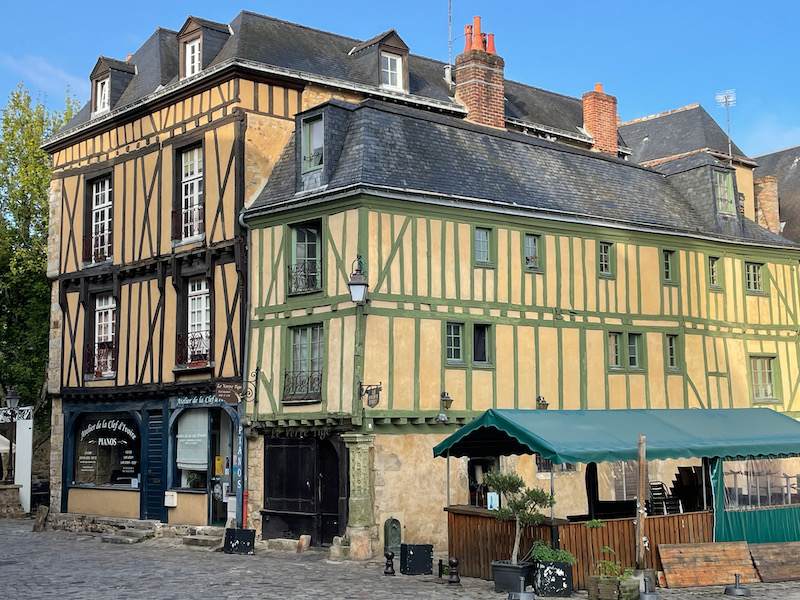
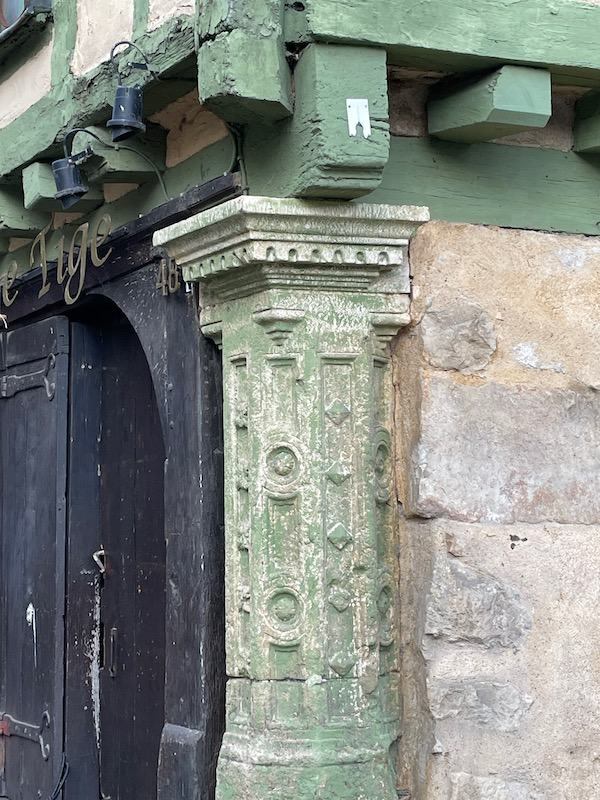
Then we continued to wind our way through and found some other interesting houses. Here you can see the mullioned windows. What I imagine is that the doorway on the right used to be much larger to allow for horse carriages to enter as it looks like there is a semi-circle of other stones above the door. There were a couple other buildings that were half-timbered and some had interesting corner columns.
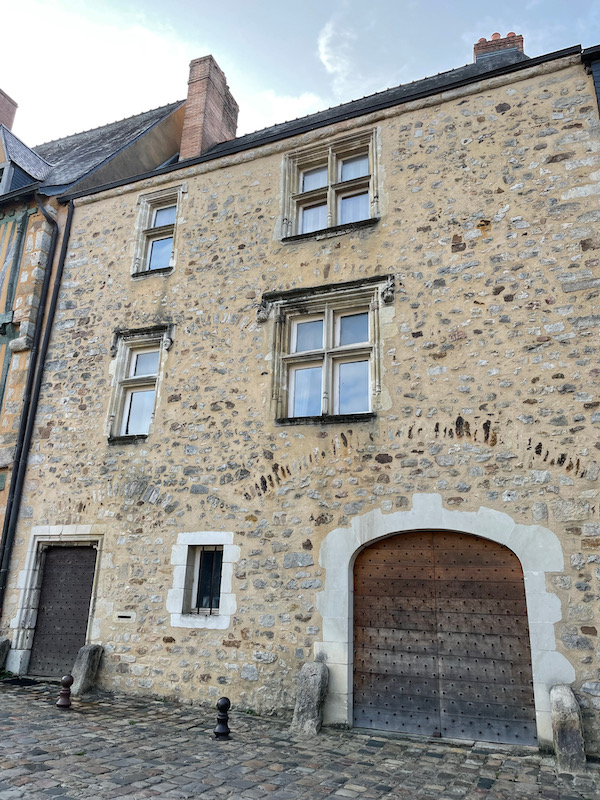
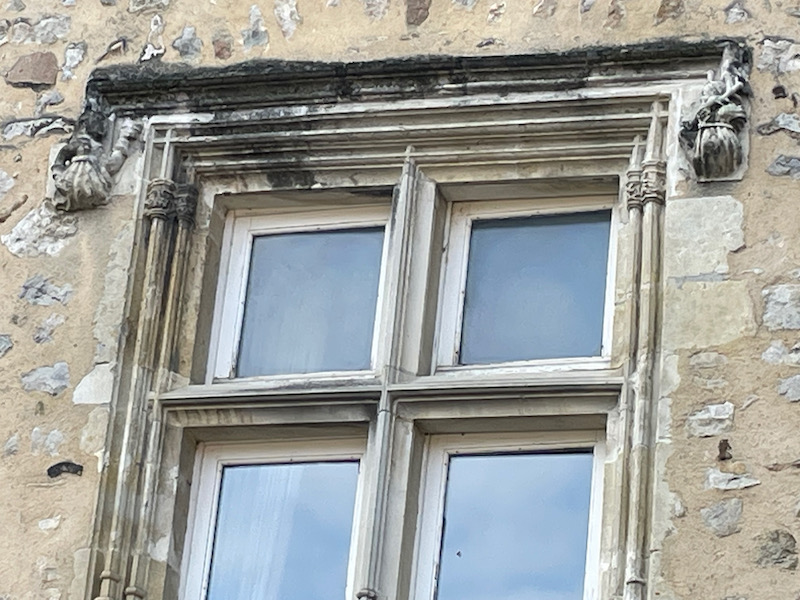
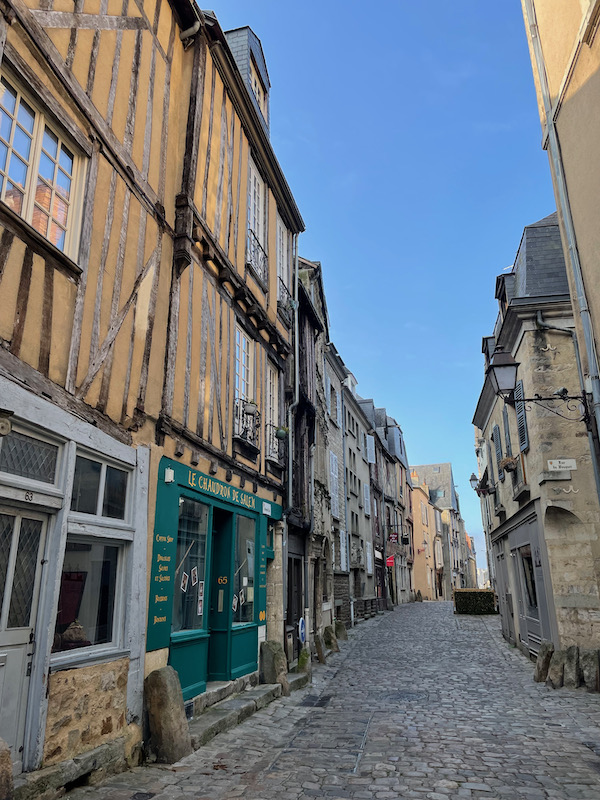
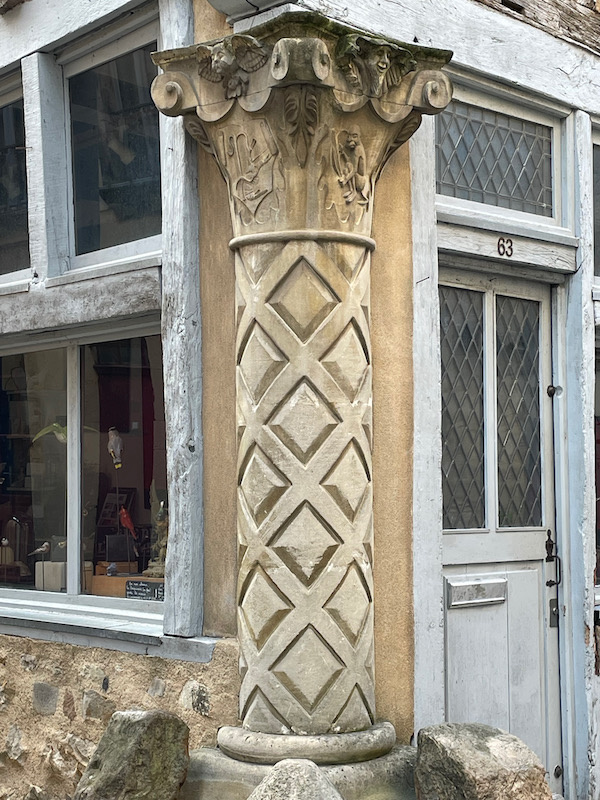
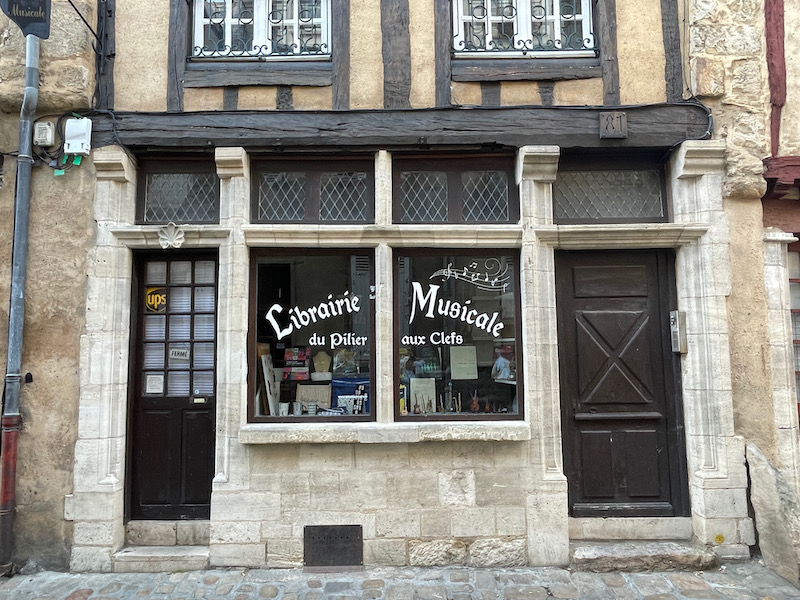
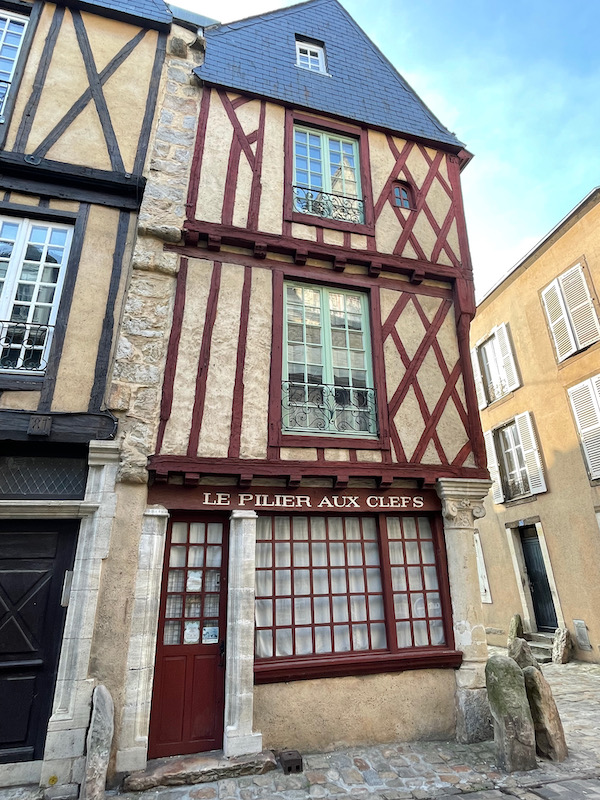
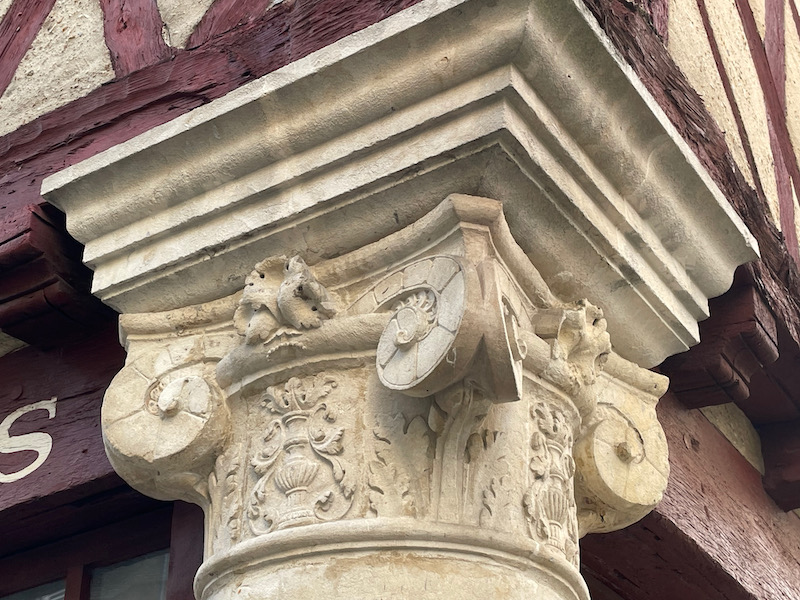
The Adam and Eve House is an old three-story building that was once the residence of the Queen's physician and astronomer, Jeandel'Épine. There is a beautiful relief above the door of the house, which was originally thought to be Adam and Eve, hence the name of the house.
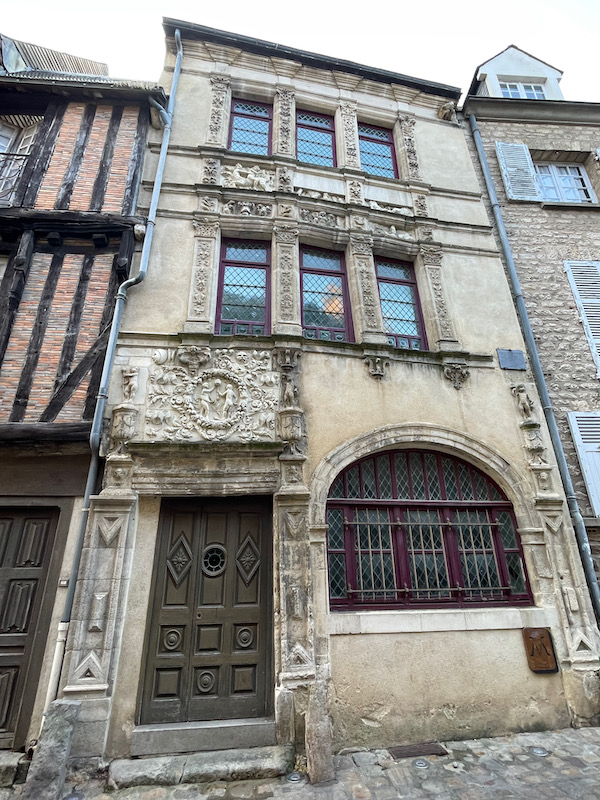
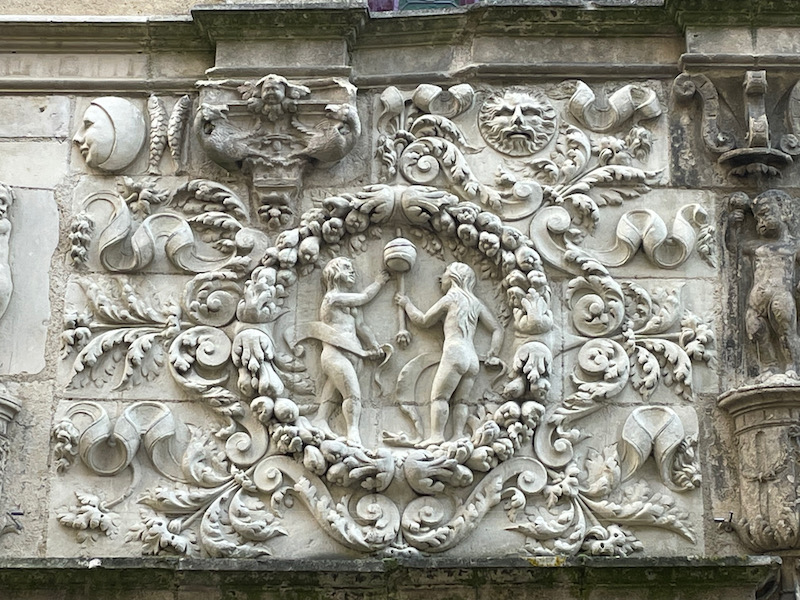
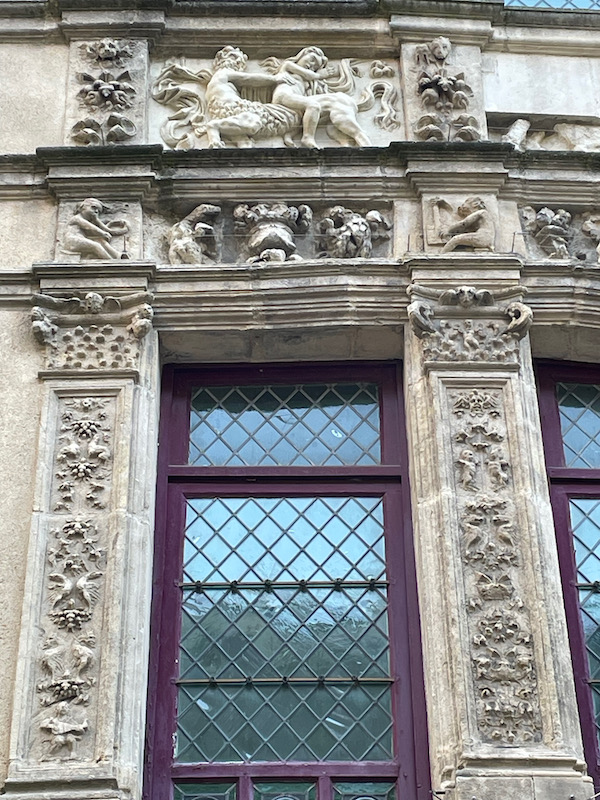
The Saint Julian Cathedral is dedicated to Saint Julian of Le Mans, the city's first bishop, who established Christianity in the area around the beginning of the 4th century. The construction dates from the 6th through the 14th century and combines two major styles: Romanesque for the nave and Gothic for the choir and transept. The choir on the outside has quite a few flying buttresses that you can see, along with the grand staircase that leads up to the church from a large square below.
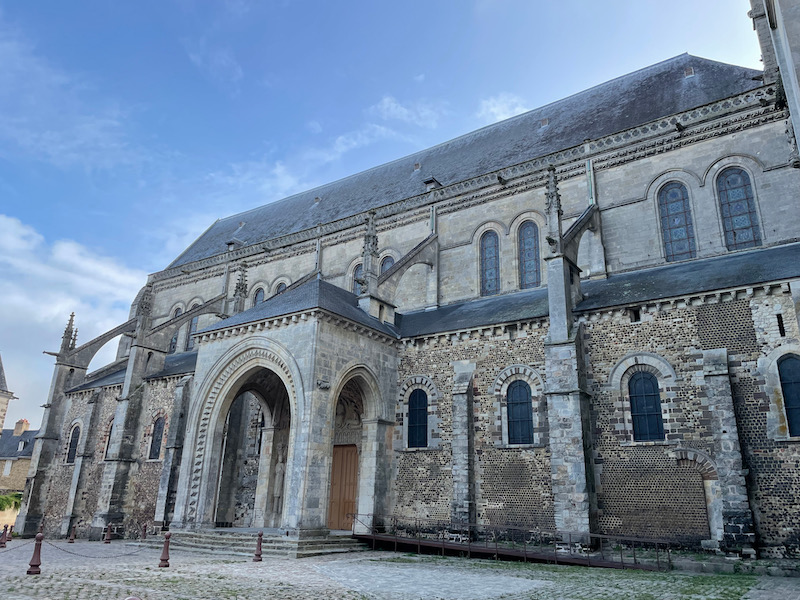
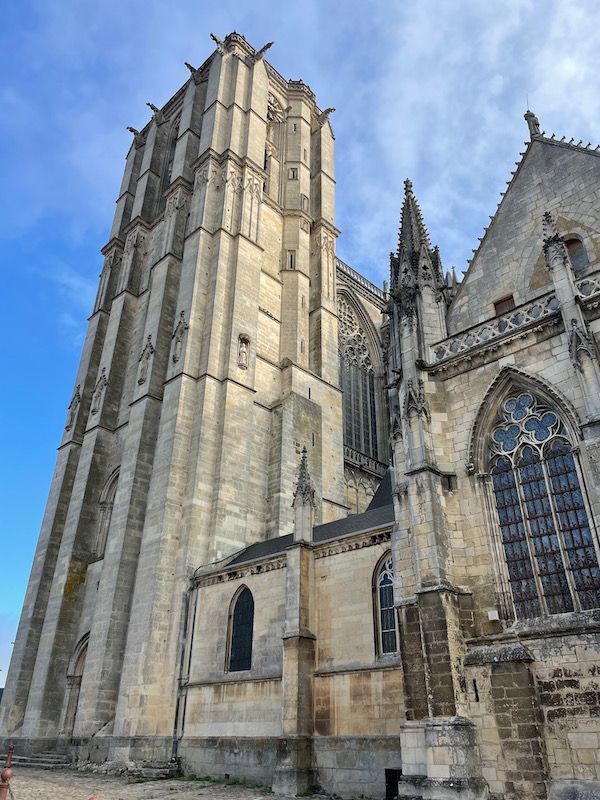
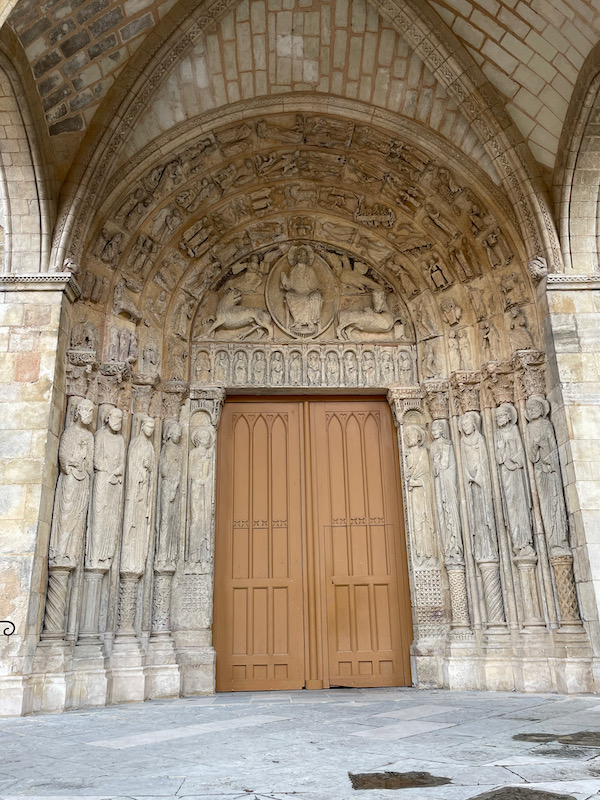
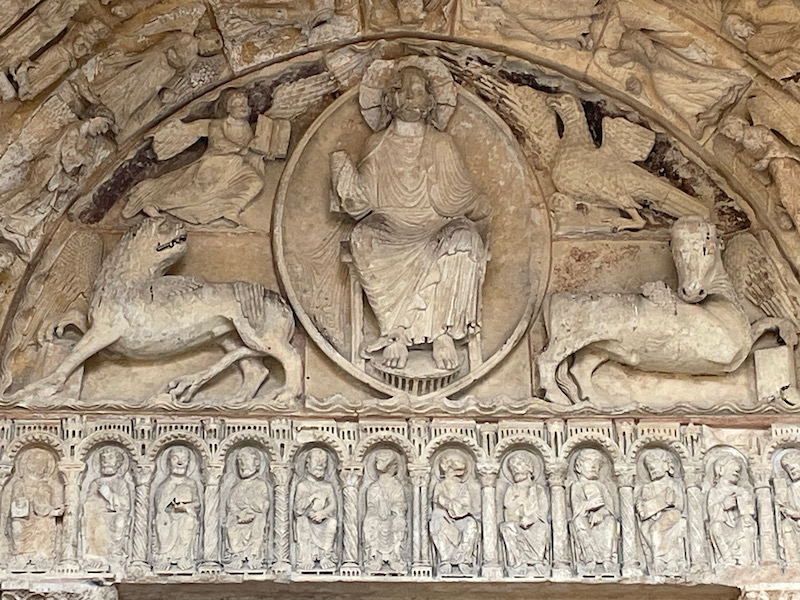
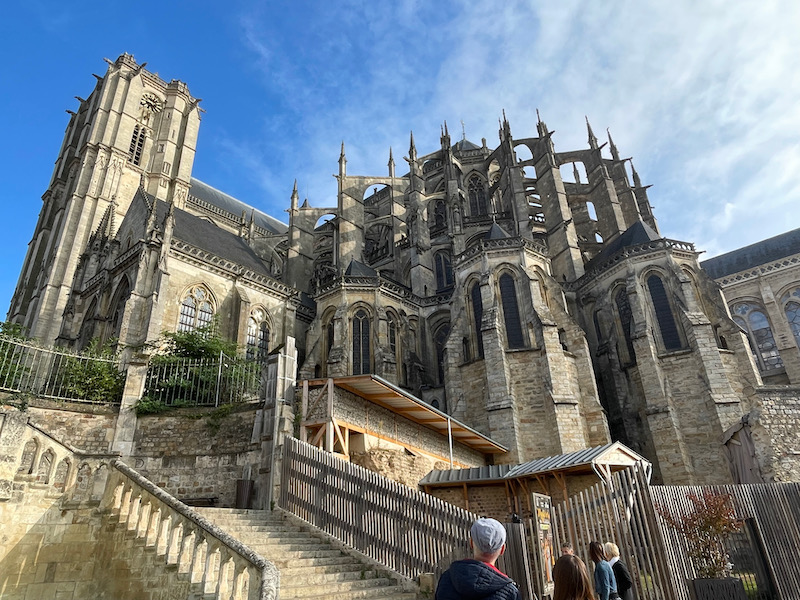
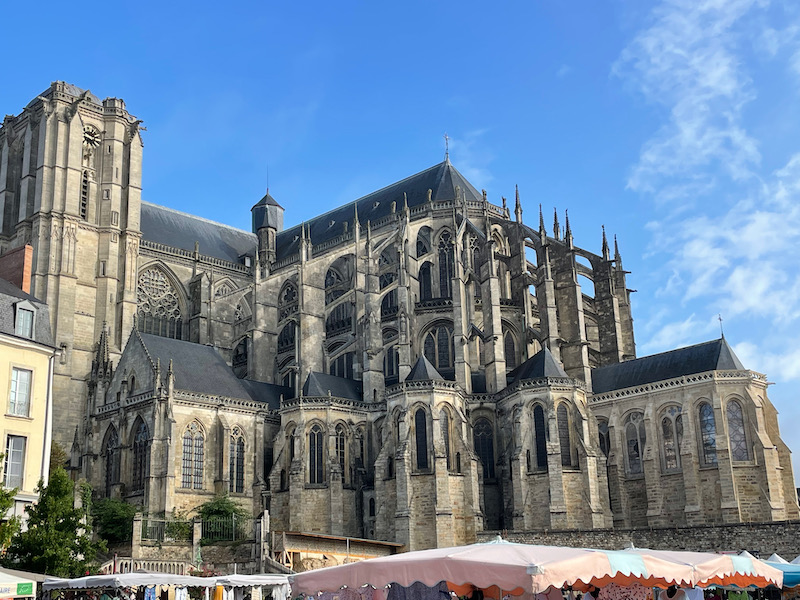
Here is one of the older sections of the church, with Romanesque arches both on the ground floor and up around the window. Then a look down the long nave, with Romanesque arches.
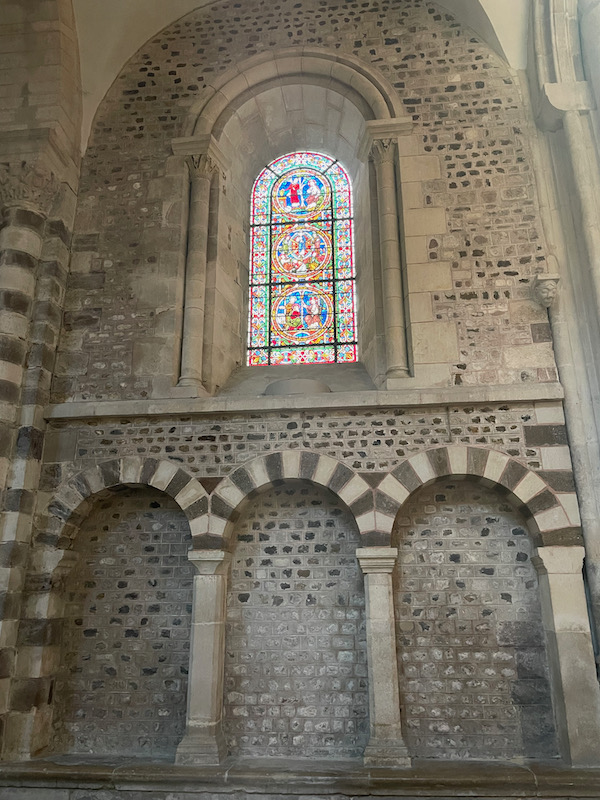
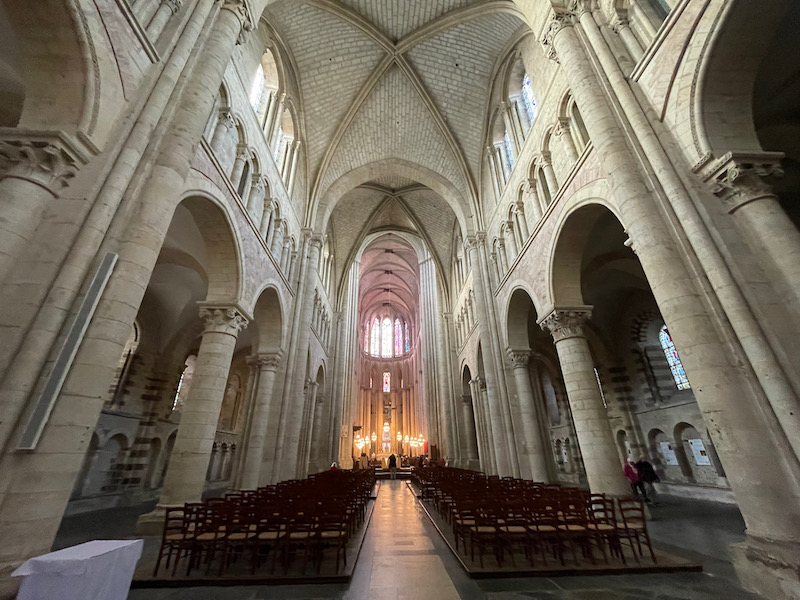
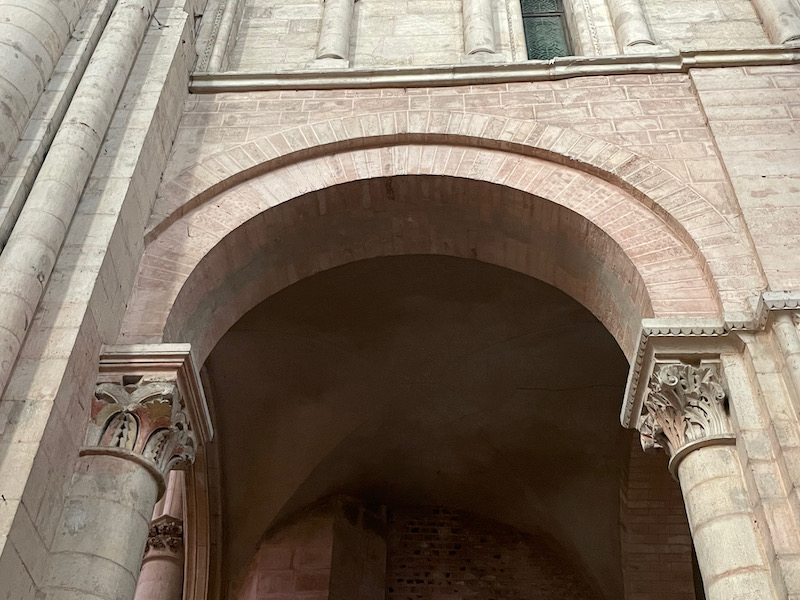
But then as you continue up to the choir, the arches are very Gothic.
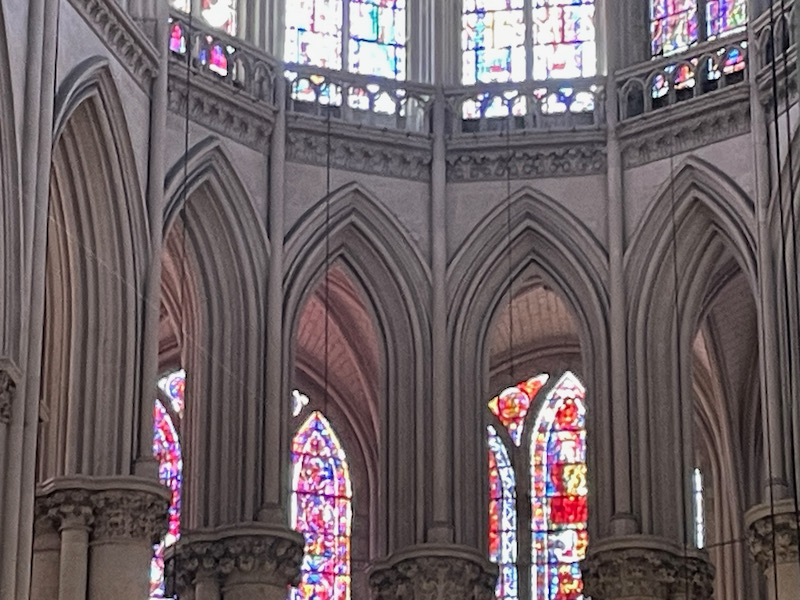
Some old statues still exist here, including this large group representing The Entombment, with terracotta figures dating from around 1635.
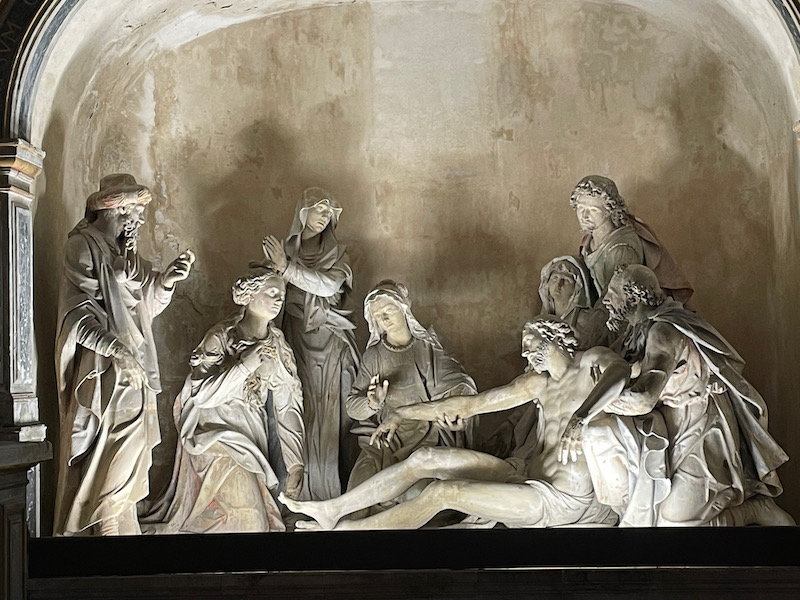
The stained glass windows, both Romanesque and Gothic, are of exceptional quality and are among the oldest in France, in particular the Ascension window, dated 1120.

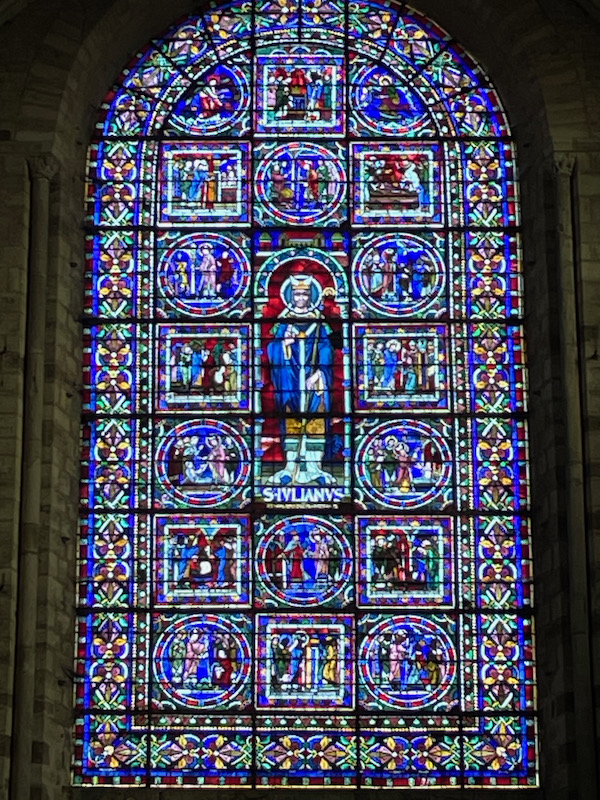
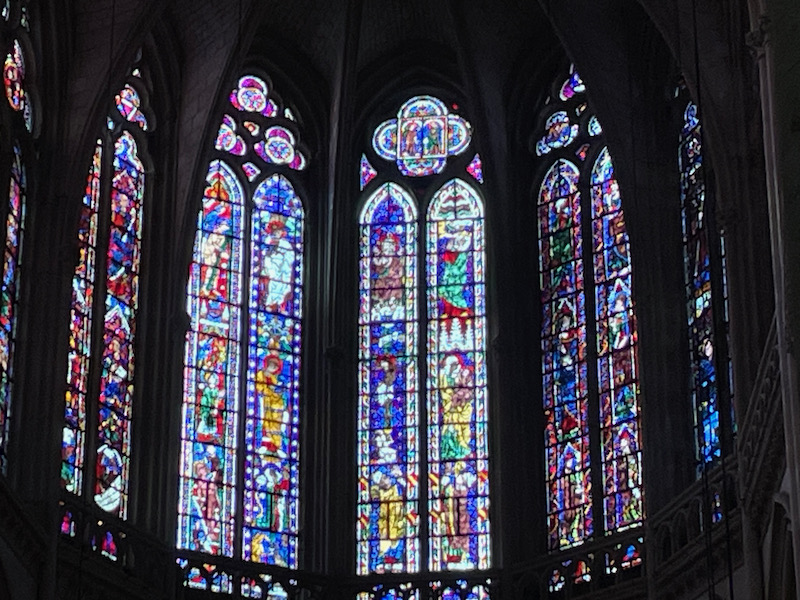
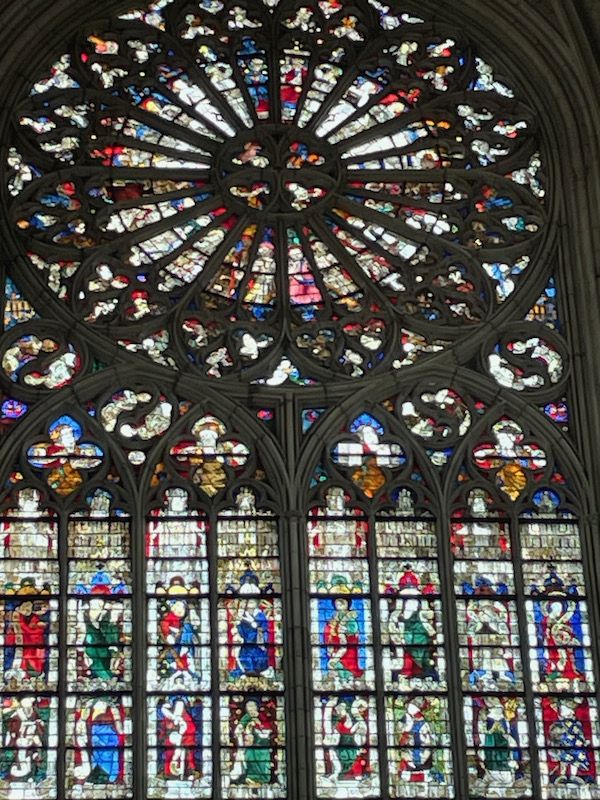
A few random pictures walking around, showing the architecture as well as some of the carved wooden furniture.
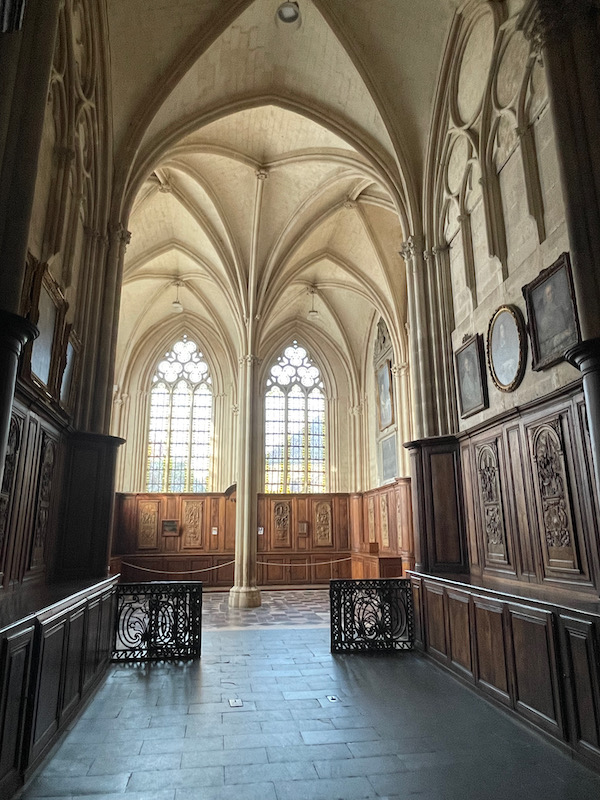
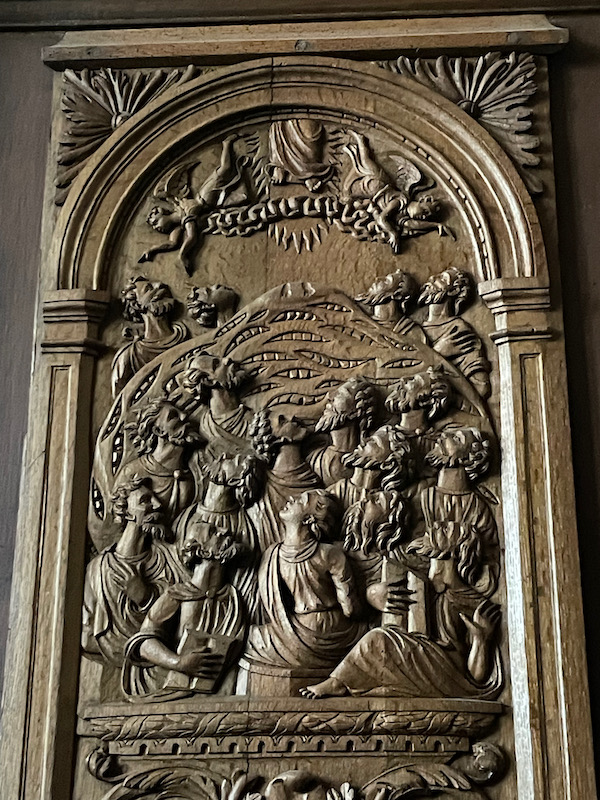
Chapel of St. Michael with a polychrome status of Saint Michael the archangel with a dragon under his feet. There is still remnants of the painted color and frescoes that were on the walls.
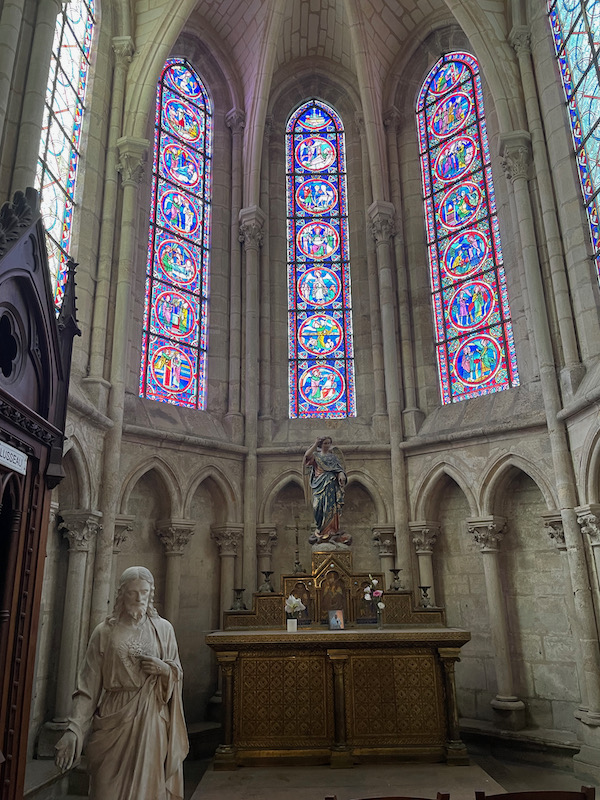
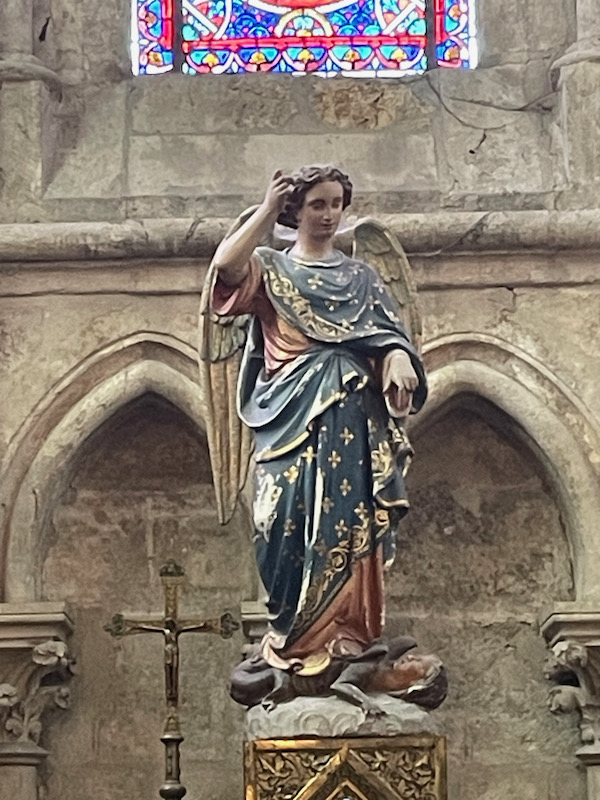
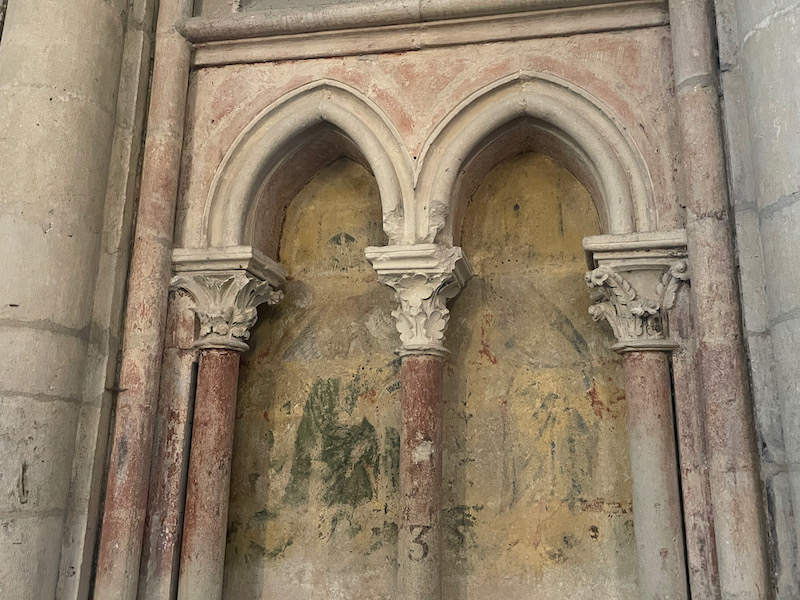
The ceiling is very tall, as you can see here with blind galleries with fine tracery on the upper floors. You can also see the rose window at the very top. It was a gift from King Charles VI in the 15th century.
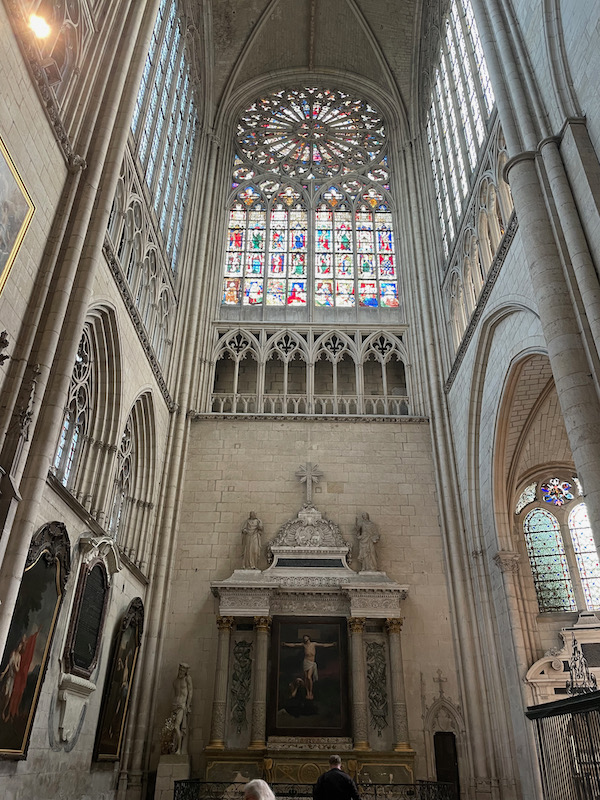
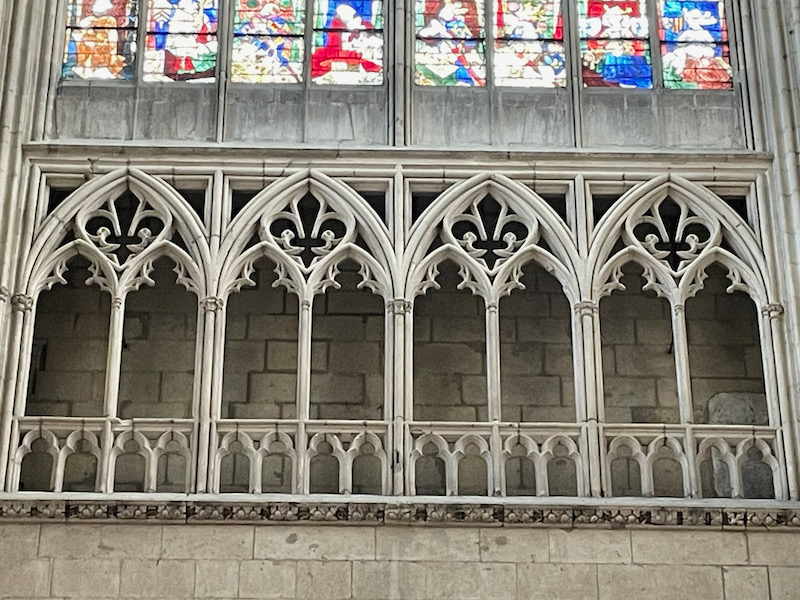
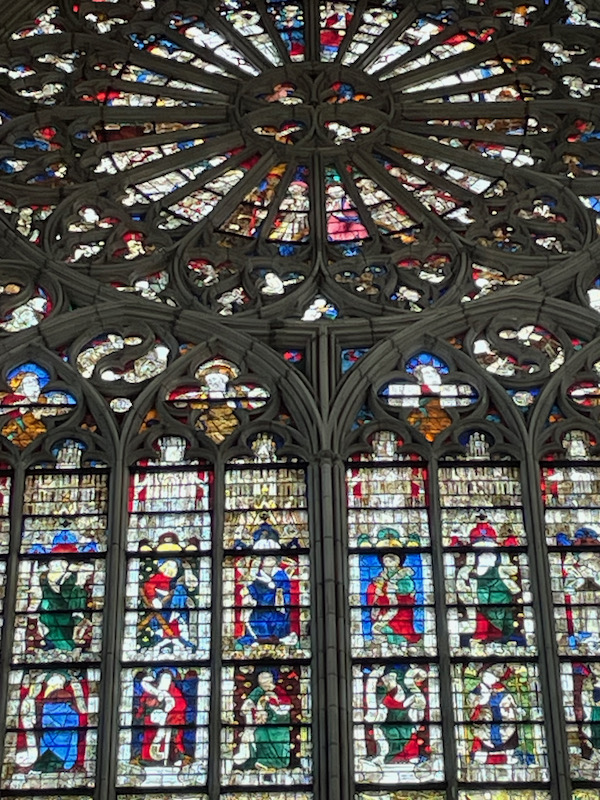
The organs date from 1529 and the carved wooden case, done in Renaissance style, is from 1628.
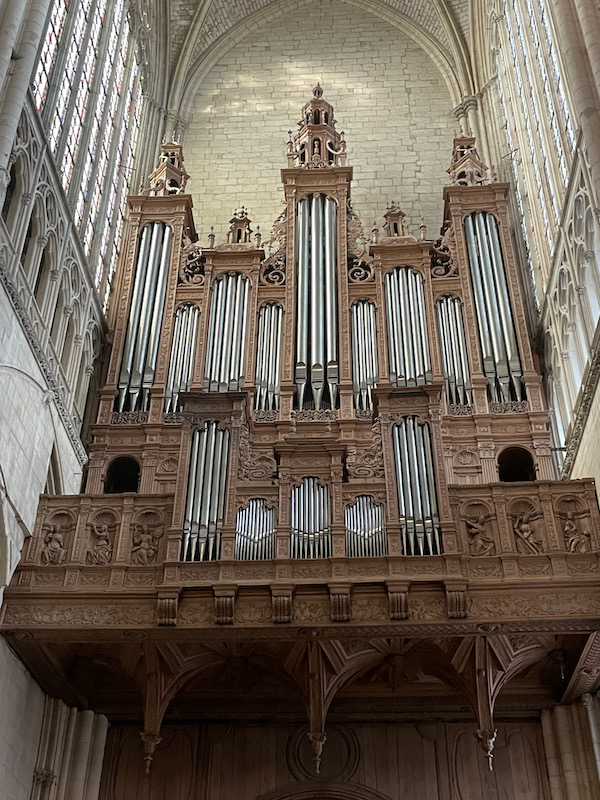
From the cathedral, we headed down a large staircase to the place below with this fountain. It was inaugurated in May 1854 for the railway’s arrival in Le Mans
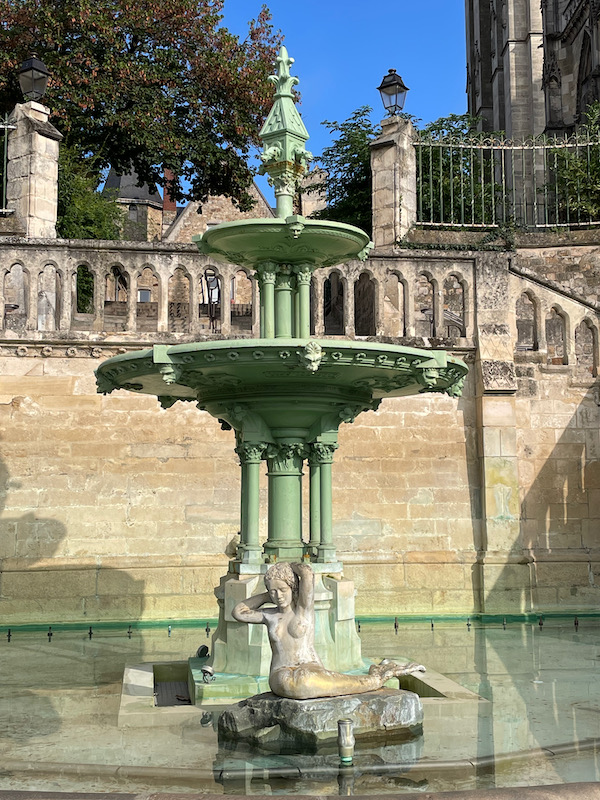
Built in the 11th century, the Palais Royal was the palace of the Counts of Le Maine and was the birthplace of the Plantegenet king Henry II, future King of England. After the Revolution, it became the City Hall. We didn't have time to tour the inside, so that will have to wait for our next time in town.
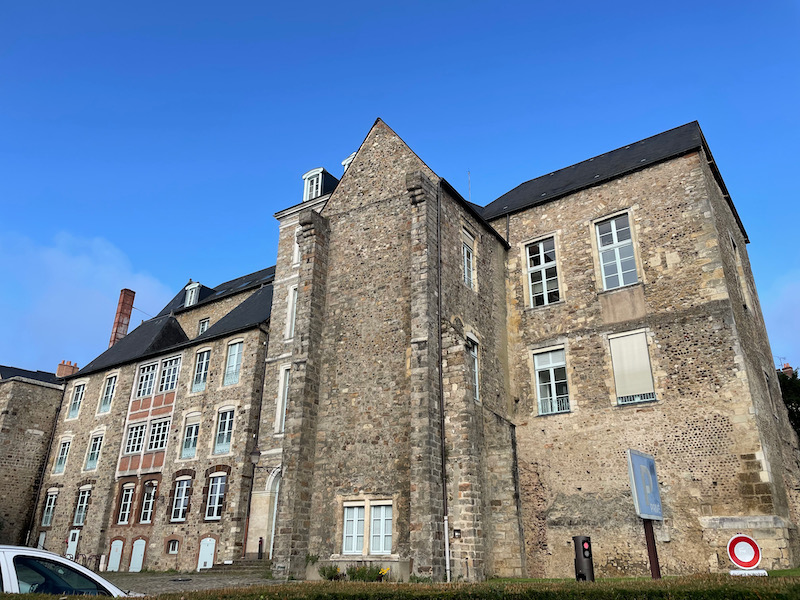
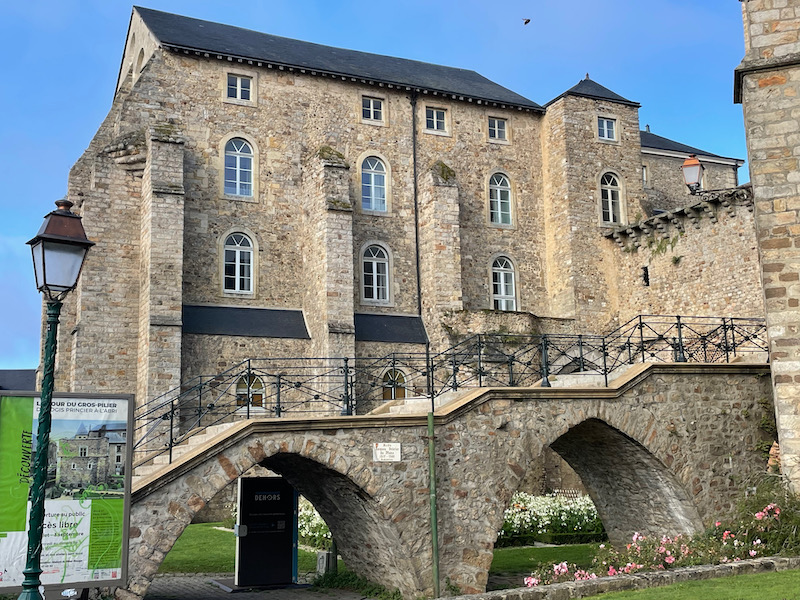
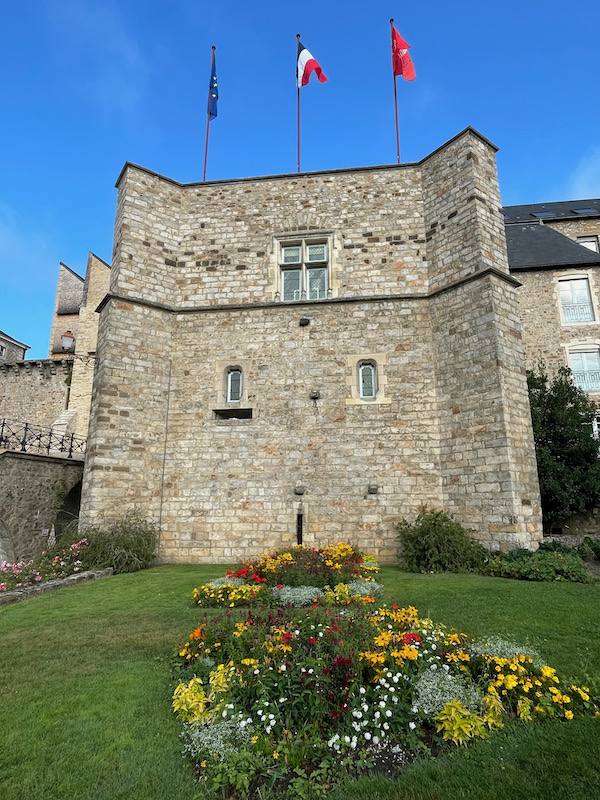
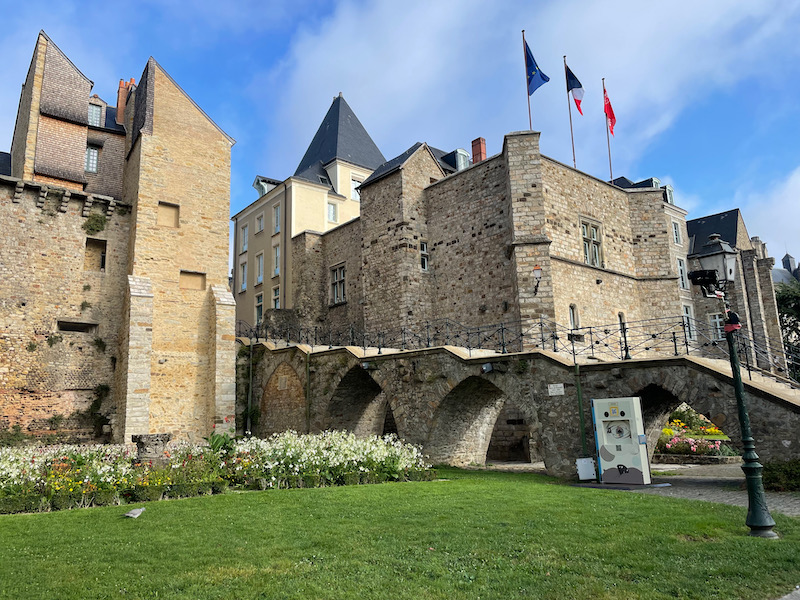
Our last stop was at the Église Notre-Dame-de-la-Couture, the former abbey church of the Saint-Pierre Abbey of Couture. The main entrance is on the western side, and it is flaked by 2 towers with very different styles. The previous church was seriously damaged during the "great fire" of Le Mans in 1180 and it was rebuilt soon after, pretty much entirely out of limestone. The two towers that are seen here date from the 13th century. The tympanum, also 13th century, represents the Last Judgment.
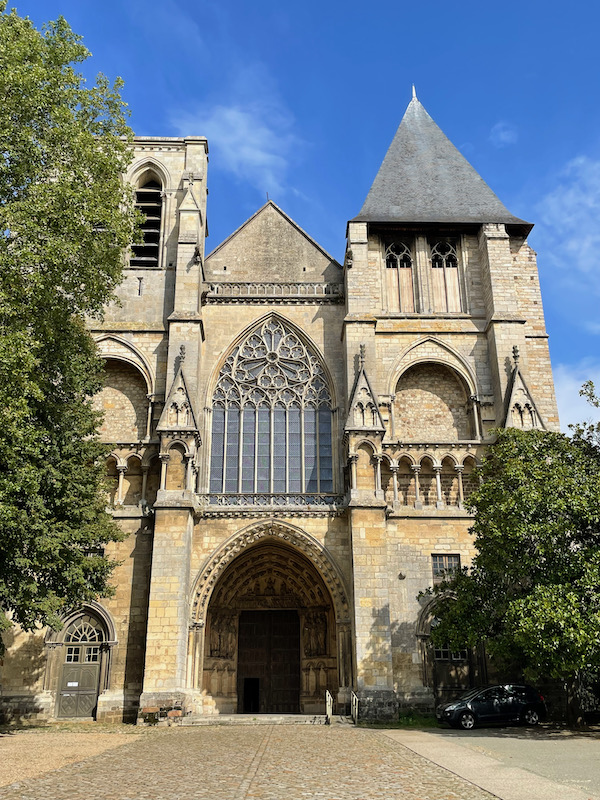
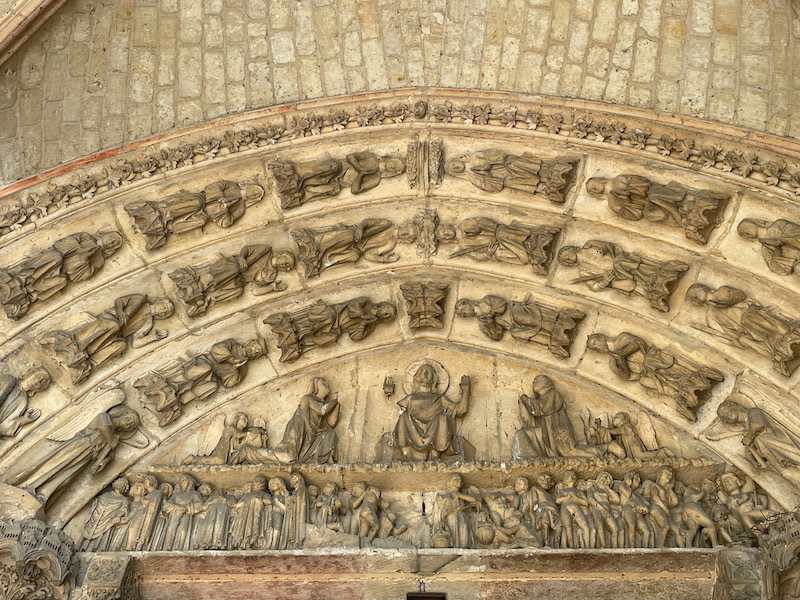
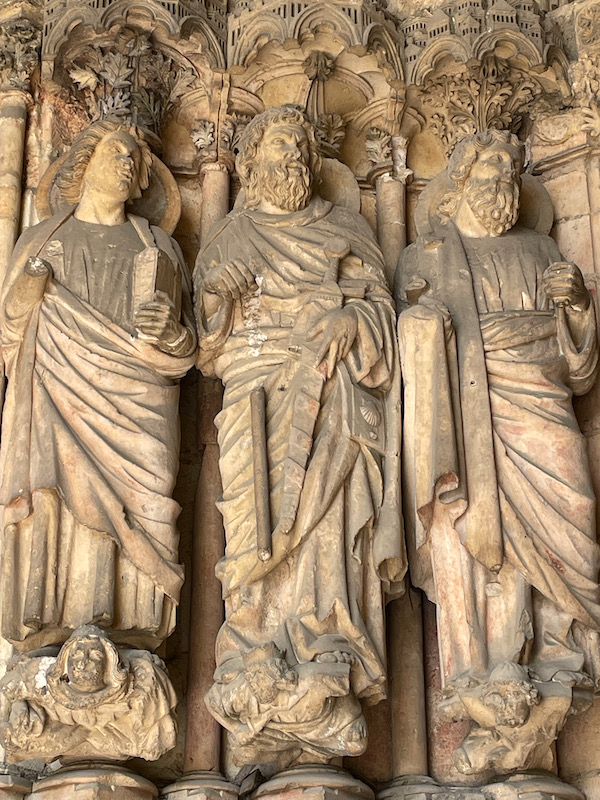
The design of the church is that of a latin cross. A few parts of the church date from the 10th century (the crypt and ambulatory) and then the nave is 12th century with a south chapel in the 13th century. Some of the columns are still painted, as well as a large arch in the nave.
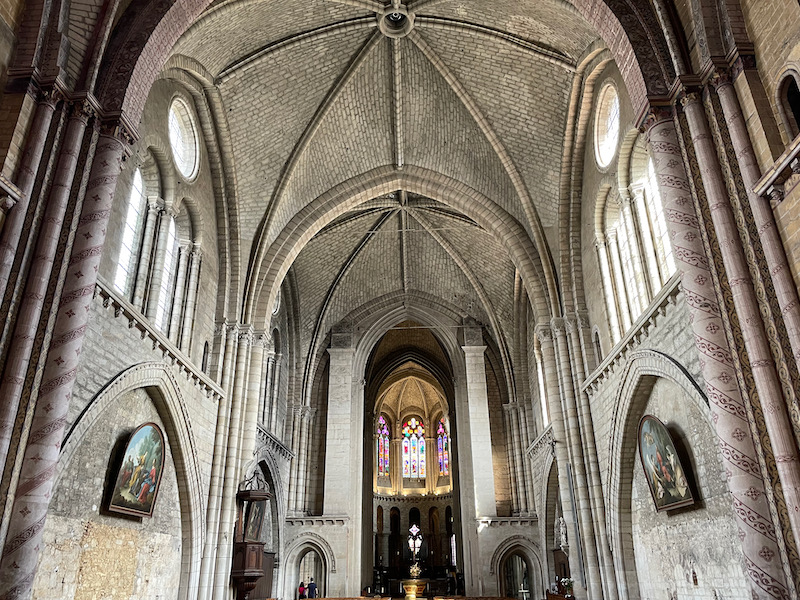
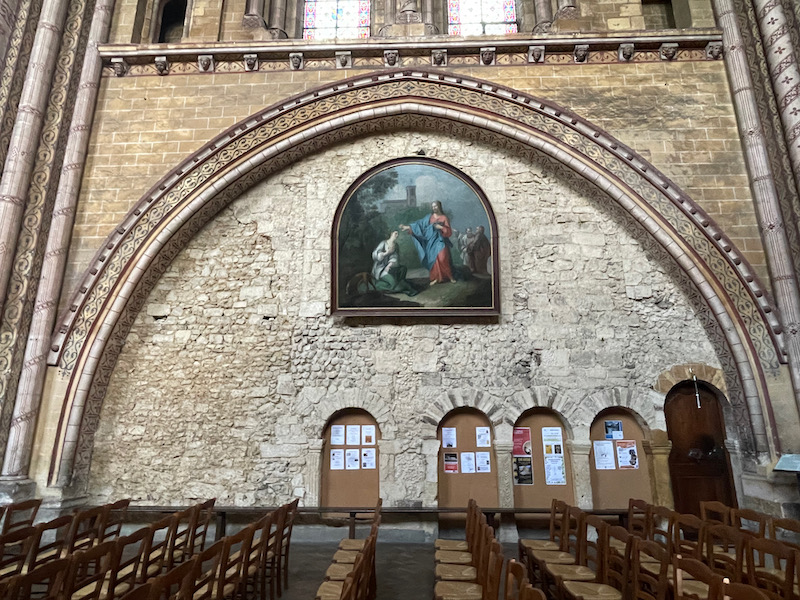
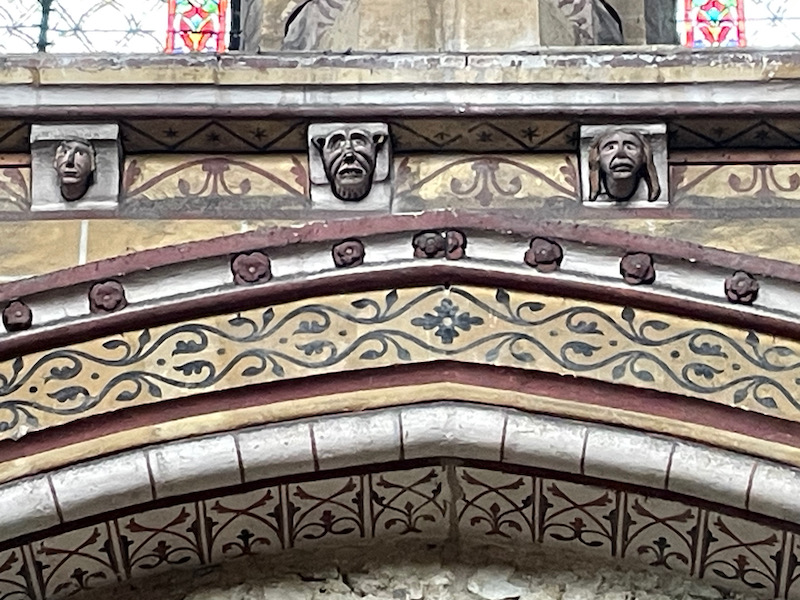
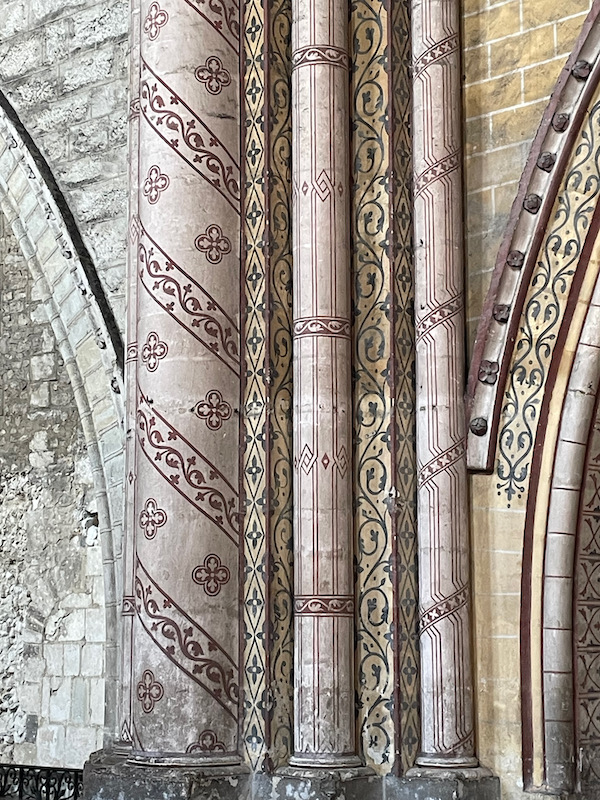
There are a couple of areas where you can see modifications. This first picture, you can see how there were 3 small Romanesque arches (like those seen above in one of the photos) that were closed up. You can also see a similar one behind the painting in the 2nd picture.
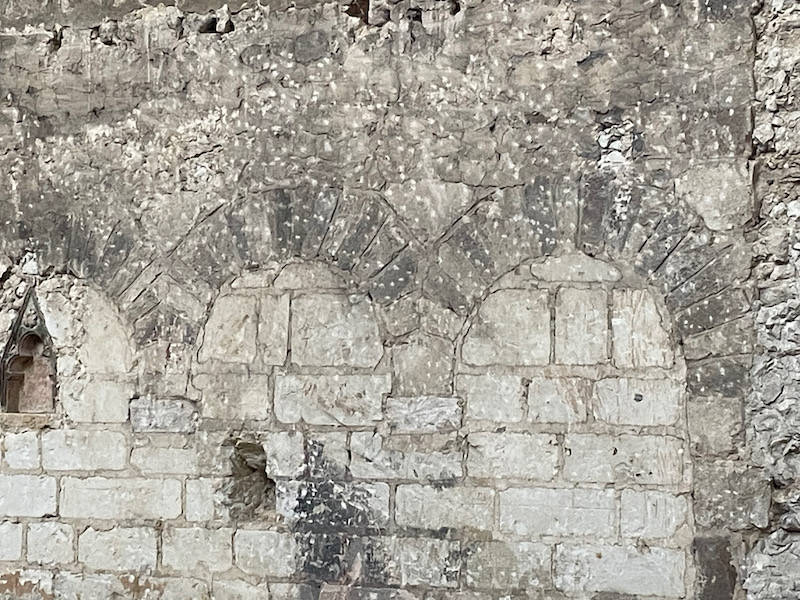
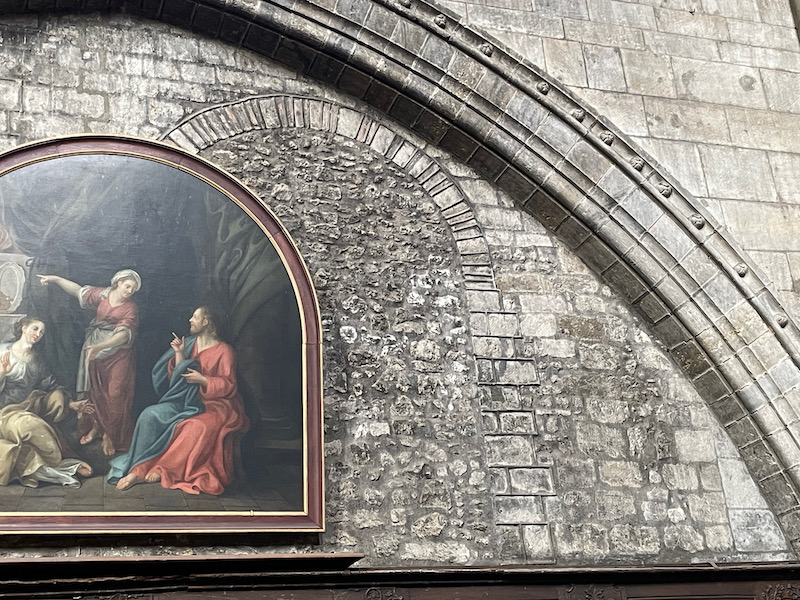
Here is one of the side altars, which seems to me to be Baroque in style.
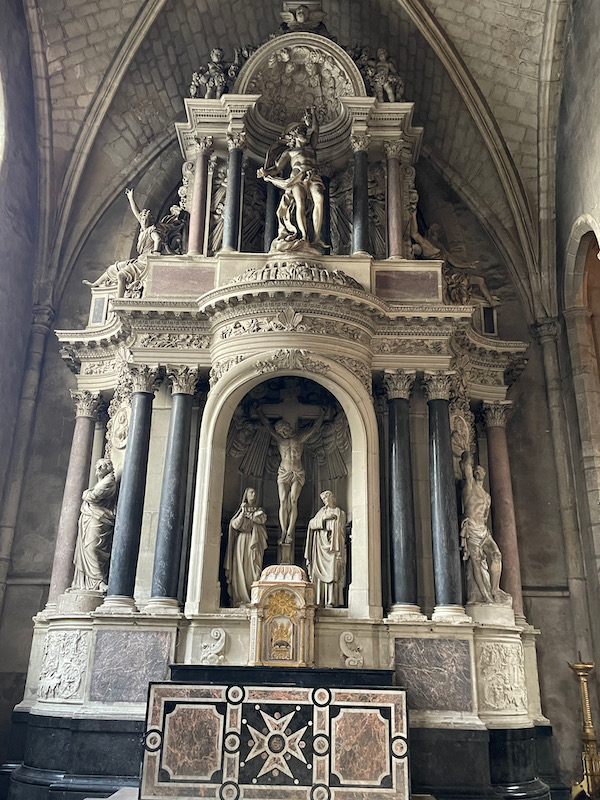
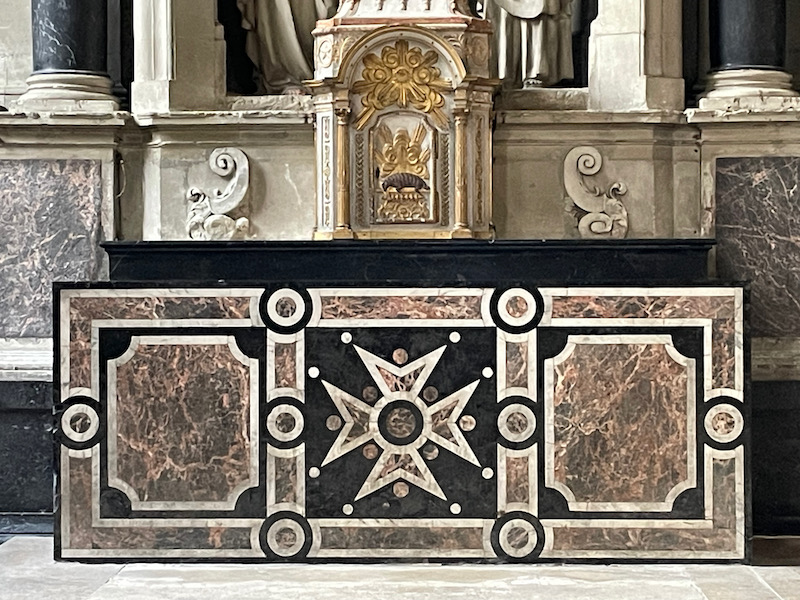
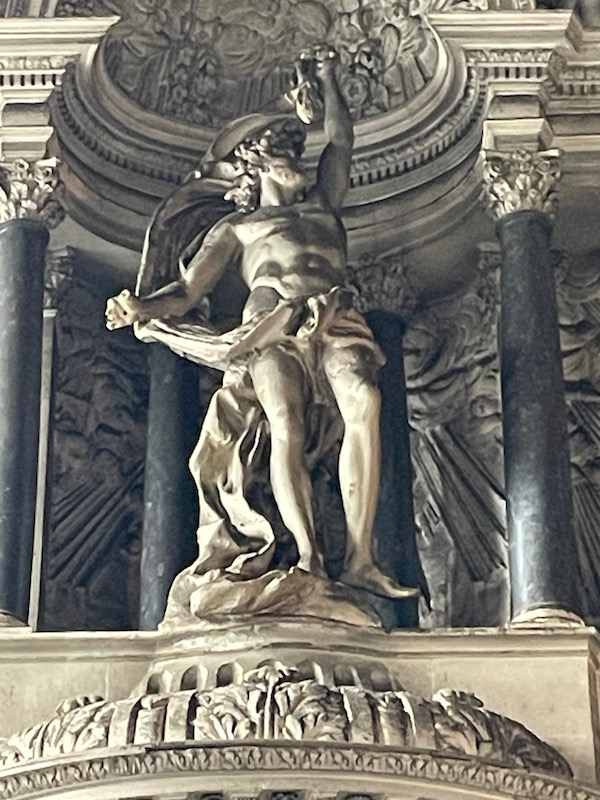
The main altar, also what to me is Baroque, has several nice statues surrounded by different-colored marble columns.
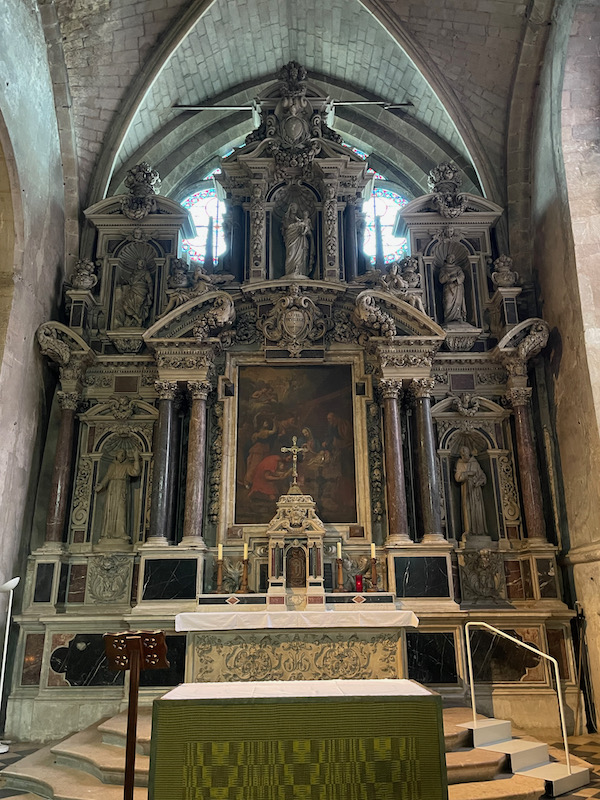
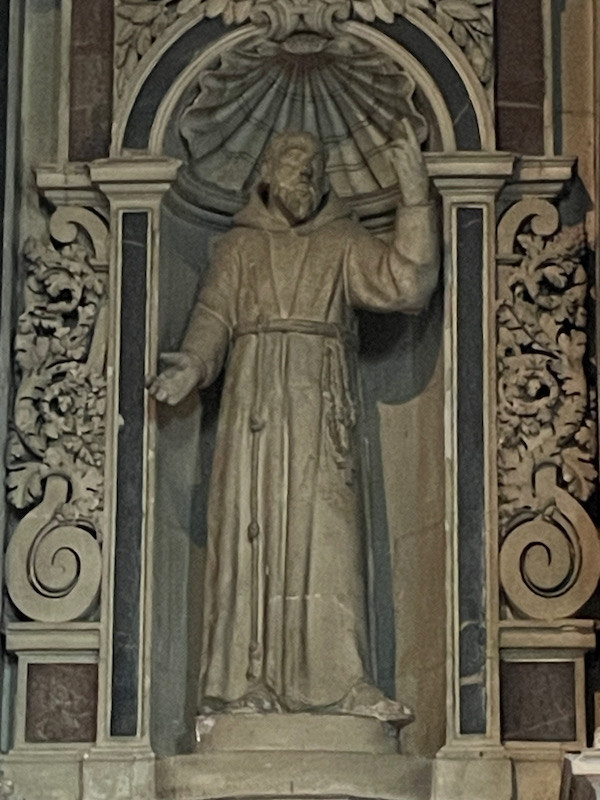
Most of the stained-glass windows date from the 19th century from a local glassmaker.
